




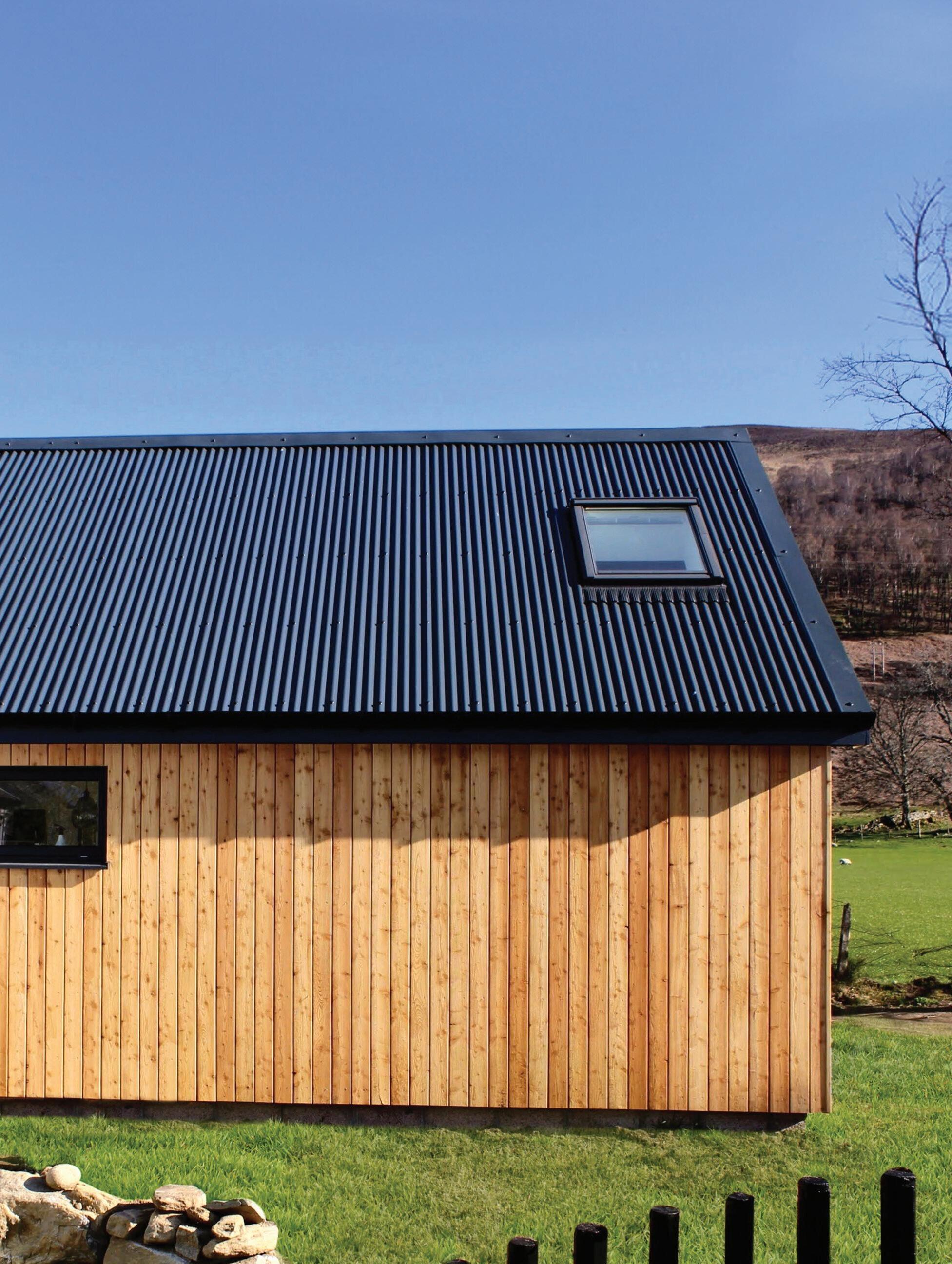
Cladco Steel Roofing Sheets are suitable for agricultural, industrial and domestic applications, available in up to 14 colours. Speak to our expert Sales team to find out more.

Corrugated, Box Profile, Tile Form and Standing Seam Roofing Sheets Available Cut To Custom Lengths
Polyester Paint, PVC Or Prelaq Mica Coatings

Pictured: 13/3 Corrugated Roof Sheets Nationwide Delivery Or Collection
Andover Branch 55 Reith Way, Andover, Hampshire SP10 3TY
Mon-Fri 8am to 5pm, Sat 8am to 1pm
Head Office Beardown Road, Exeter Road
Industrial Estate, Okehampton, Devon EX20 1UA
Mon-Fri 8am to 5pm, Sat 8am to 1pm

SOUTH EAST FARMER
Kelsey Media, The Granary, Downs Court Yalding Hill, Yalding, Maidstone, Kent, ME18 6AL 01959 541444
EDITORIAL
Editor: Malcolm Triggs
Email: sef.ed@kelsey.co.uk
Photography: Martin Apps, Countrywide Photographic
ADVERTISING & MARKETING
Jamie McGrorty 01303 233883 jamie.mcgrorty@kelsey.co.uk
GRAPHIC DESIGN
Jo Legg 07306 482166 jo.legg@flair-design.co.uk
MANAGEMENT
DIVISIONAL MANAGING DIRECTOR: Steve Kendall
PUBLISHER: Jamie McGrorty
RETAIL DIRECTOR: Steve Brown
SUBSCRIPTION MARKETING MANAGER: Claire Aspinall
PRINT PRODUCTION MANAGER: Kelly Orriss
DISTRIBUTION
Distribution in Great Britain: Seymour Distribution Limited 2 East Poultry Avenue, London
EC1A 9PT Tel: 020 7429 4000 www.seymour.co.uk
Distribution in Northern Ireland and the Republic of Ireland: Newspread Tel: +353 23 886 3850
Kelsey Media 2024 © all rights reserved. Kelsey Media is a trading name of Kelsey Publishing Ltd. Reproduction in whole or in part is forbidden except with permission in writing from the publishers. Note to contributors: articles submitted for consideration by the editor must be the original work of the author and not previously published. Where photographs are included, which are not the property of the contributor, permission to reproduce them must have been obtained from the owner of the copyright. The editor cannot guarantee a personal response to all letters and emails received. The views expressed in the magazine are not necessarily those of the Editor or the Publisher. Kelsey Publishing Ltd accepts no liability for products and services offered by third parties.
Kelsey Media takes your personal data very seriously. For more information on our privacy policy, please visit www.kelsey.co.uk/privacy-policy/
If at any point you have any queries regarding Kelsey’s data policy you can email our Data Protection Officer at dpo@kelsey.co.uk


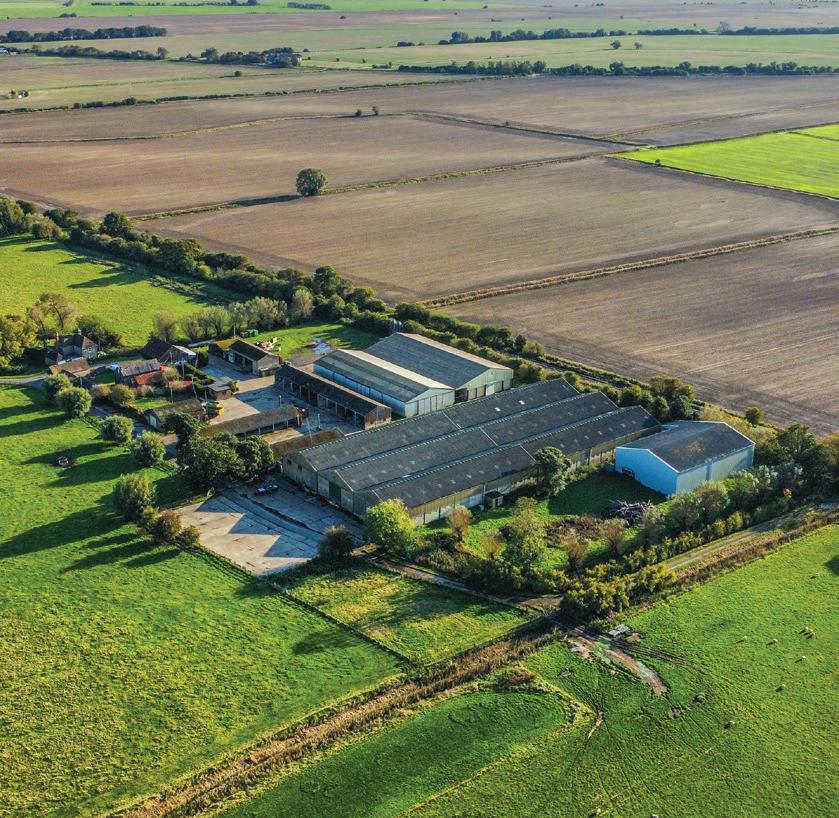
on offer for South Downs farmers and graziers.
Another threat to the future of small and medium-sized abattoirs has led to a stark warning that half of them could be forced to close.
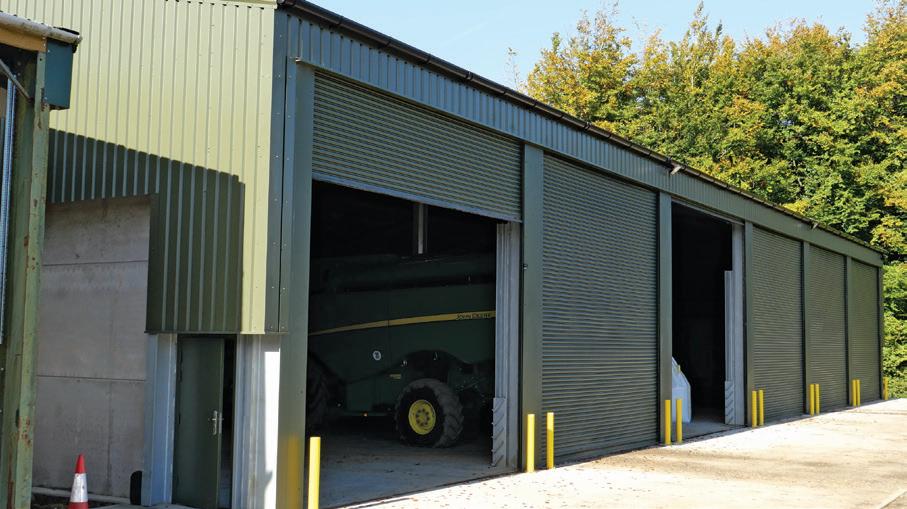
www.kelsey.co.uk
Cover picture: Charltons
The weather has been exasperating lately for Monica; just when it seems the ground is starting to dry out, down comes the rain in biblical proportions.
Farm, to meet the Alexander family. With a busy, working 1,100-acre farm and an ambitious landscape-scale habitat and river restoration project underway, there’s much to discover.
Montreal Estate decided to boost the efficiency of the estate’s woodchip business by commissioning a new six-bay store.
Work on a new 7,500 sq m packhouse and distribution building marks the next chapter in the fruit grower’s remarkable expansion.
New research that could increase the natural resistance of wheat to septoria leaf blotch has begun at Edinburgh’s HeriotWatt University.
Wheat is the world’s second biggest grain crop by volume, with UK farmers alone producing 14 million tonnes in 2023. The projected rise in the world’s population from eight to ten billion people by 2050 makes increasing yield and reducing its vulnerability to disease urgent.
The crop, though, faces a growing threat from a common fungal disease called septoria tritici blotch (commonly known as septoria leaf blotch), which can destroy up to 20% of the UK’s wheat crop in a year.
“Countries in Northern Europe are vulnerable to septoria because of the weather,” explained
Dr Angela Feechan, a plant pathologist at HeriotWatt’s Institute for Life and Earth Sciences. “We have more rain – and the fungus is a big fan of rainy, humid conditions.”
Scientists have been unable to control the disease completely using fungicides, and are looking at how genetics can play a part. Their research will examine why some wheat varieties are more resistant than others to the disease.
Working with a collection of 300 wheat varieties at INRAE, France’s National Research Institute for Agriculture, Food and Environment, Dr Feechan and her team will examine specific genes in different wheat varieties and how the products of these interact with the fungus that causes septoria.
This fungus, Zymoseptoria tritici (Z. tritici), attacks the wheat plant through spores. These
destroy the plant’s ability to absorb sunlight through photosynthesis, turning the leaves of the wheat plant yellow and speckled and killing areas of the leaf.
“We think there are very small differences in the genes of different wheat varieties that determine whether or not they are resistant to this disease,” Dr Feechan said. “If we can find the difference in these genes that give us resistance, they could be used to breed resistant wheat varieties in the field.”
The research is funded through a postdoctoral fellowship from UK Research and Innovation, the UK’s national funding agency for investing in science and research. Researcher Dr Debabrata Dutta, a plant biology specialist, is joining Heriot-Watt University to work on the research.

His Majesty King Charles III has been confirmed as the new patron of The National Federation of Young Farmers’ Clubs (NFYFC) following the death of his mother, Her Majesty Queen Elizabeth II, who had held the position for 65 years.
The King, then the Prince of Wales, also served as NFYFC’s President from 2002 to 2006, during which time he organised visits to Highgrove for YFC members and presented awards at The Royal Show.
The NFYFC said the King’s patronage “highlights the importance
of Young Farmers’ Clubs to rural young people as well as their role supporting local communities and the agricultural sector”.
Chair of council Drew Bailey said the organisation was “honoured”, adding: "His Majesty's commitment to the countryside and the welfare of rural communities perfectly aligns with the mission of NFYFC and its clubs and counties.
“Much of our work focuses on developing rural young people’s skills and raising awareness about opportunities in the sector.”

It’s no secret that the best way to persuade people to do what you want them to do is to appeal to their pocket. Altruism is all very well, and there are certainly plenty of generous people in the world who give freely of time and money, but for the rest of us, no incentive works quite as well as a likely boost to the bottom line.
Few would argue that converting energy from the sun into ‘free’ electricity using solar PV panels is anything but a great idea, but it took significant grants and generous feed-in tariffs to persuade people to adopt the technology.
With five deaths linked to quad bike accidents since April this year, the National Association of Agricultural Contractors (NAAC) is highlighting the dangers with a hard-hitting campaign.
In a follow-up to its #WearItandShareIt campaign, which saw the NAAC inviting social media users to post photos of themselves wearing a helmet, the association’s latest campaign asks why anyone would choose not to wear a helmet
The NAAC highlights the fact that deaths linked to sit-astride ATVs (quad bikes) have become “the most significant cause of deaths involving moving vehicles in our industry”, and points out that other “serious and life-changing incidents” happening all the time.
With some in the industry still reluctant to wear a helmet despite the risks, the NAAC is asking why anyone would choose not to do so or would send a worker or family member out on a job without a helmet knowing that the risks involved could be reduced by wearing one.
NAAC chief executive Jill Hewitt said: “We have seen an increase in quad bike deaths this year and it baffles me how our industry still considers this a risk worth taking.
“Whether on flat or sloping land, incidents can always happen, and we need to be clear that it is a legal requirement to wear a helmet at work. More important though, if you wear a helmet, you are more likely to survive if you come off.”
The Health and Safety Executive has confirmed that, following an incident in which someone was not wearing a helmet, that fact would be a key part of the investigation and could result in enforcement action, including prosecution. Enforcement action will also be taken if an inspector sees someone working on farm without a helmet on.
As well as wearing a helmet, the NAAC has stressed that it is important to ensure anyone riding an ATV is competent and trained to handle the machine. The NAAC offers a discount on helmets to its members.
It’s much the same with travel, with the Government offering incentives and levying charges aimed at persuading us to adopt or reject different modes of transport or routes depending on the current (often short-term) thinking. Most of us don’t avoid driving into central London because we are worried about the affect it might have on the health of those living there, but because the congestion charge will leave a big hole in our bank balance.
While generally this financial pressure to ‘do the right thing’ is embedded in policy, it can also be accidental – and it might just help to save the planet, depending on your view of the environment and the man-made pressures it faces.
While the Environmental Land Management scheme (ELMS), now brought to life for most farmers in the shape of the Sustainable Farming Incentive (SFI), was conceived as an attempt to persuade right-thinking landowners to do their bit for the environment, there is now a growing risk that growing birds and butterflies will become the only game in town.
The financial pressure of rising input prices and volatile returns, the unpredictable weather patterns caused (with every respect to the dwindling hard core of doubters) by climate change, and the administrative headaches associated with the likes of bluetongue and abattoirs are making ‘ordinary’ farming challenging at best.
Diversification, once the ‘next big thing ‘ in farming but now a necessity for most, offers some respite from the doom and gloom, but there is a limit to how many rural office buildings, maize mazes and glamping sites the country can accommodate.
With SFI payments reasonable and, in many cases, ‘stackable’, and commodity prices and yields under pressure from world events and weather patterns, choosing environmental options is no longer the preserve of the environmentally aware but is increasingly likely to be the favoured option of anyone with an eye on the bottom line.

EMAIL YOUR VIEWS, LETTERS OR OPINIONS TO: sef.ed@kelsey.co.uk or write to the address on page 3
® MALCOLM TRIGGS - EDITOR












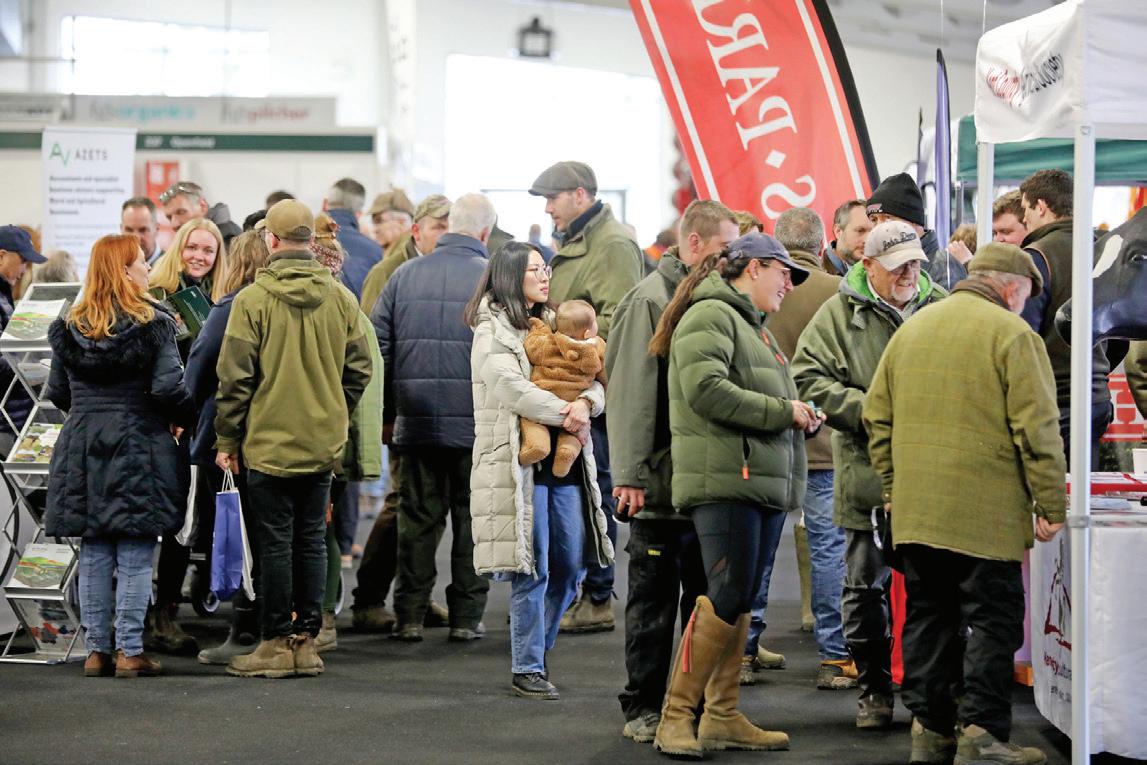





South Downs farmers, graziers and land managers are being invited to join an innovative programme to help them increase profits from grazing and build resilient businesses.
Pasture and Profit in Protected Landscapes: South Downs is a FiPL (Farming in Protected Landscapes)-funded programme delivered by Pasture for Life and supported by the South Downs National Park Authority.
The programme features a series of events centred around knowledge exchange, free mentoring and bespoke training, with the aim of helping those taking part reduce input costs and boost profits while delivering environmental benefits through grazing.
Events this autumn are focusing on adaptive grazing practices, financial planning, conventional to circular systems and improving livestock health and performance, and will be followed by a winter webinar series aimed at beef, sheep and dairy producers.
Ali Laws, project manager, encouraged anyone who grazes or farms in the South Downs National Park to take advantage of the free events.
“They are led by farmers and specialists, with opportunities to share ideas and learn from research,” she said. “We also offer a
limited number of free, flexible mentoring places and bespoke training geared to the needs of your farm business.
“Adapting different approaches to grazing management will allow you to cut costs and reduce the workloads associated with housing livestock during winter. Your farm will potentially become more resilient to rising input costs and better able to mitigate climatic impacts.”
Ali went on: “Mentoring often gives people the confidence to make changes to their systems and adopt more regenerative practices. In some cases, farmers are both mentees and mentors as everyone has different areas of expertise and knowledge to pass on.”
Farmers on the programme are sharing knowledge on topics such as maximising the use of pasture/forage as a feed source, reducing worm burdens to improve animal health, boosting biodiversity and dealing with the impacts of extreme weather such as drought or flooding.
Ali added: “Farmers who took part in the first phase of the programme in other south eastern counties have reported mental health benefits, having cut costs, improved the health of their livestock and soil, and boosted business resilience.”
The programme is open to anyone farming or managing land in the South Downs National Park. Contact Ali at ali@pastureforlife.org or call 07805 167624. For upcoming events see: www.southdownsfarming.com/networks/pasture-and-profit-in-the-south-downs

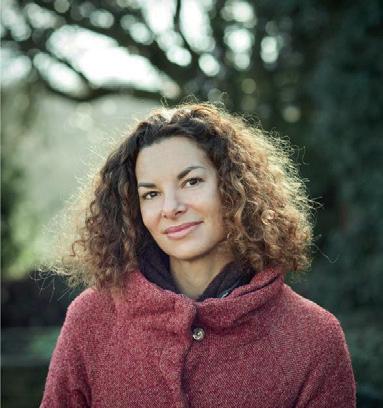
More than 30 top names have been lined up to “inspire and inform” delegates at the 2025 Oxford Farming Conference (OFC), which takes place from 8 to 10 January and will focus on the theme of "Facing Change, Finding Opportunity."
Organisers promise: “Over the course of two days, more than 30 visionary speakers will inspire and inform delegates, covering critical topics from sustainable livestock production and cutting-edge scientific advancements to innovative food policies and farm diversification strategies."
Headline speakers include the Consul General of India in Birmingham, Dr Venkatachalam Murugan, record-breaking adventurer and motivational speaker Olly Hicks and acclaimed environmental strategist and author Gaia Vince.
The renowned OFC Oxford Union debate will tackle the motion that “this house believes that UK agriculture needs more grazing livestock, rather than fewer, to be truly sustainable”, with Professor Jude Capper from Harper Adams University and Rob Havard of Phepson Angus arguing in favour, opposed by Henry Dimbleby, co-founder of Bramble Partners, and Colin Ferguson, NFU Scotland's dairy vice chair.
www.ofc.org.uk
• Open conventional ploughs (The Charlie Belcher Perpetual Cup): Harry Lawrence
• Reversible ploughs – not more than five furrows (The Michael Colston Perpetual Cup): Terry Sayer
• Work done by a vintage tractor – hydraulic (The George Druce Perpetual Challenge Cup): Jordan Greenaway
• Work done by a vintage tractor – trailed (The David Sarney Perpetual Challenge Cup): M Burrows
• Work done by a vintage tractor – amateur status (The Arthur Aldridge Cup): Laura Mearns
• Best work by a Ferguson tractor (Christopher George Memorial Cup): Harry Lawrence
• Best maintained tractor over 25 years (Martin Bullock Trophy): M Burrows
• Best work by a young ploughman, aged 17 to 20 (Ron Vines Cup): Jack Marcham
• Best work by a Young Farmers’ Club member: Jordan Greenaway
• Best opening (Drewitt Memorial Cup): Brian Spittles
• Best finish (Michael Hunt Cup): Graham Clifton
• Best work by ploughman on the day: M Burrows
Another threat to the future of small and medium-sized abattoirs has led to a stark warning that half of them could be forced to close.
Guy MacNaughton, founder of Local Abattoirs R Key (LARK), has pointed out that Food Standard Agency (FSA) proposals that would increase costs would seriously damage the industry, with a significant knock-on effect on livestock farmers across the South East and beyond.
He also pointed out that a £4m scheme launched by DEFRA last year with the aim of helping abattoir owners modernise their plants failed because it relied on the businesses putting in a significant amount of their own capital in order to qualify for the grants. “As we predicted from the outset,” Guy added, “no abattoir in the South East had the necessary capital to benefit from the scheme.”
The current crisis is around a review of the costs levied on small and medium-sized abattoirs, particularly the discounts currently given by the FSA to help businesses meet the costs of providing official veterinarians (OVs) and meat inspectors.
Peter Hewson, veterinary director of the Association of Independent Meat Suppliers (AIMS) told BBC Radio 4’s Farming Today programme that FSA proposals to increase OVs and inspectors would “single-handedly destroy the foundations of the meat industry”.
He was commenting on the FSA’s ‘call for evidence’ on the proposed changes, which the agency says reflect the fact that the increasing costs of providing inspectors and OVs need to be passed onto businesses. The consultation ended on 24 October.
Peter pointed to recent calculations that showed a medium-sized slaughterhouse in the UK paid around £3,000 a month currently as opposed to about £800 in France or Ireland. With the discount removed
the cost would be about £8,000 a month - 10 times as much as a similar plant in France or Ireland. “It’s just not possible for them to survive on that sort of payment,” he added.
Guy MacNaughton said one smaller abattoir locally had calculated that its average monthly charges would rise from £110 to £1,020 under the proposals and would face closure as a result.
AIMS has also carried out research into the different ways in which countries interpret European Union (EU) regulations, with the FSA insisting on much tighter compliance by UK abattoirs.
Its report concluded that the FSA had “fundamentally misunderstood the requirements for the presence of OVs at slaughterhouses” and pointed out that this meant vets were unnecessarily being used to verify Food Business Operator (FBO) compliance as well as carrying out anteand post-mortem checks.
That led, in turn, to overseas vets with poor English having to be overseen by an expensive management structure put in place by the FSA at additional cost, something that was not necessary in other countries.
In a letter to then Secretary of State for Environment, Food and Rural Affairs Steve Barclay after a meeting in Peasmarsh earlier this year, Guy MacNaughton summed up the situation by pointing out: “Urgent steps are necessary to resolve issues which have arisen as a result of the UK’s unique interpretation of Regulation 2019/624 and 627 which came into effect in December 2019.”
Guy, a tireless campaigner for the industry who came to the fore when Tottingworth Abattoir near Heathfield closed at the end of 2022, said AIMS and others had been trying for many years to persuade the FSA to reduce red tape around small and medium-sized

abattoirs in order to save the industry.
In another letter, this time to Alistair Carmichael MP, the chairman of the Government’s Environment, Food and Rural Affairs Committee, he pointed out that Tottingworth had closed “because of over regulation, their appalling experiences of the FSA and FSA vets, and escalating costs”.
Referring to the FSA’s consultation as part of a review of the discounts applied to small and medium size abattoirs, he warned: “It is predicted 50% of these abattoirs will close, removing a vital network, already decimated, that supports livestock farmers across the country where demand is strong for local produce.
“Given the need to enhance food security and the critical role such abattoirs play, it is extraordinary that this can be occurring now.”
In the letter he suggested implementing a new regulatory regime for small and medium sized abattoirs which, amongst other things, would reduce the need for veterinary attendance and so the cost to the FSA.
He also called for more use of new technology to allow remote inspections, keeping the existing discounts and applying the ‘5% rule’, an EU concession based on national throughput that would in effect allow all the country’s smaller abattoirs to operate without the need for a full veterinarian presence.
On the use of technology, Guy pointed out: “After all, GPs have been undertaking remote consultations with patients since Covid-19.”
His letter concluded: “To avoid further loss of this vital infrastructure, reduced food security and resilience, and another nail in the coffin for small livestock farmers, will the EFRA committee play a part in ensuring the industry is supported?”
Guy told South East Farmer: “Under Sir Tony Blair’s Government, Lady Caroline Cranbrook was awarded an OBE for her support for small abattoirs. Now this new Government needs to finish the job of rebuilding the industry by stopping the regulator from regulating these businesses out of existence. After all, small businesses employ 61% of the UK workforce and generate £2.4 trillion of UK turnover.”
He added: “It's a damning indictment of the way regulators work that although an FSA review of the 5% production threshold rule in April 2020 found that 50% of smaller abattoirs would benefit from reduced bureaucracy and lower costs, nothing came of it.
“Sir Keir Starmer pledged at a recent business summit to get rid of regulation that ‘holds back investment’. Well, he could make sure this applies to the rural economy to save our abattoirs and livestock farming in the UK by endorsing technology to enable remote inspection.”
South East Farmer correspondent Monica Akehurst has her say on the possibility of increased costs…
“As a livestock farmer, I cannot emphasise enough how crucial it is to have access to thriving abattoirs. Many smaller abattoirs have been forced to close, yet consumer demand for locally produced meat is strong.
“If we lose our remaining smaller abattoirs due to overregulation and the financial burdens that follow, the consequences will be catastrophic. This will impact animal welfare, grazing patterns and the overall viability of livestock farming, essential for the part it plays in meeting DEFRA’s drive for reversing habitat loss and reducing fossil-fuel inputs.
“Speaking at the International Investment summit in London on 14 October, Sir Keir Starmer said: ‘We will rip out the bureaucracy that blocks investment and we will make sure that every regulator in this country takes growth as seriously as this room does.’ Music to my ears… but is
the Food Standards Agency listening? It is proposing an increase in costs.
“It’s in everyone’s interest to ensure that food is safe to eat; this is indisputable. Reducing red tape would lower costs, but
regulators seem reluctant to take constructive action to support industry growth. Farmers and abattoirs would benefit from a change in mindset. I hope that the Labour Government succeeds in realising their aspirations.”

An open letter to the CEOs of the ‘Big Six’ supermarkets:
Dear Sirs,
One year ago, we wrote to you as part of Riverford’s #GetFairAboutFarming campaign and explained that British family farmers are on the brink. The Big Six’s imbalanced, shortterm, and wasteful buying practices leave farmers without a stable income – and many are at risk of going bust.
In response, you’ve done some brilliant marketing. We’ve noticed the British flags on display up and down the fruit and veg aisles, the meat offering “higher welfare standards”, and the quaint farm imagery on labels and billboards. You’ve even publicly promised to support farmers, to the tune of billions of pounds.
But in reality? Much of the produce under those British flags is imported, animal welfare claims are often cynically worded, and ‘trusted farms’ are frequently US-style mega farms. Meanwhile, the quaint farms shown in adverts are struggling to survive. This is farmwashing. Behind the scenes, things have only got worse for Britain’s small farmers. Our survey reveals:
• A staggering 61% of farmers confess being likely to give up their farm in the next 18 months.
• Only one in four (24%) farmers think that supermarket claims to support British farmers are credible and backed up by supermarket buying behaviour.
• Two thirds (67%) live in fear of being de-listed if they speak out about supermarkets.
The British public cares about where their food comes from. Shoppers want to support local, sustainable farms, where animals are treated well, staff are paid properly and the planet is protected. Two-thirds of us seek to buy British – and research shows that shoppers trust farmers more than anyone else in the food supply chain.
Supermarkets all leverage the trusted reputation of British family farmers. But we believe that, often, food is being mis-sold. Farmwashing doesn’t just mislead shoppers. Labour shortages and catastrophic weather
mean that this is already a challenging time for British farmers. If you don’t start treating them more fairly, then real food from real farms – which customers value and trust – risks disappearing from shelves altogether.
Supermarkets have the power to help protect British food and farming, in particular the smaller-scale British farms. You know what needs to be done; in fact, you’ve spoken publicly about doing it. Now all we’re asking you for is a little integrity. Stop farmwashing and start offering real support for real farms. Guy Singh-Watson, founder of Riverford Organic Farmers (plus 100 other supporting signatures from across the industry)
Dear Sir,
DEFRA’s appointment of economist Dan Corry to carry out an internal review into the regulation and regulators at the department to ensure it has the appropriate focus on rural economic growth will hopefully be a catalyst for change.
The countryside is full of dynamic and forward-thinking businesses, but they are being held back by a political system that treats rural areas as a museum, instead of as a living, breathing part of the economy.
Ministers need a laser-like focus on identifying and removing the barriers to economic growth in the countryside. These include our woeful planning system, lack of affordable housing, poor connectivity and what is often an anti-business attitude among National Park authorities.
The rural economy is 16% less productive than the national average, and closing that gap could add about £40bn to UK gross value added (GVA). The Government could unlock this enormous potential; with the right support, rural businesses can generate growth, creating good jobs and prosperity.
The CLA is urging the Government to have a greater rural focus. If it wants to see growth, it needs policies that create the confident environment for investment. At the moment there is too much uncertainty for the short and medium term and with it a diminished appetite for risk.
In its first 100 days, the Government has been keen to put economic growth front and centre of its missions, but it must not forget rural areas.
Victoria Vyvyan, President Country Land and Business Association
Dear Sir,
I refer to the article by Anita Hickson in the September edition of South East Farmer in which she alludes to claims that farmers are being blamed for glyphosate in rivers.
Anita goes on to say that from recent research, it appears most of this glyphosate in rivers is coming from additives contained in detergents and household cleaning products which transform to glyphosate during wastewater treatment.
As a farmer and retired crop protection consultant I was intrigued to follow this up with published research and the views of scientists having a specialised knowledge of this area.
What I ascertained was, in essence, that while glyphosate residues are being detected in rivers, these are from the compound leaching into water tables and from runoff from spraying of the herbicide, not from additives in detergents.
The claim that detergents in domestic wastewater can transform into glyphosate is spurious but confused with the fact that a widely occurring chemical pollutant of rivers known as AMPA (aminomethyl phosphonic acid) is a breakdown product of both glyphosate and certain phosphate additives in detergents.
I am, however, categorically assured that AMPA cannot transform back into glyphosate. It follows that glyphosate found in rivers is solely from the use of the herbicide.
Whether or not the levels found of a product with such a benign, low toxicity profile should be of concern is another matter, but the widespread presence in water of AMPA, from both glyphosate and detergents, could be, as there is a critical lack of epidemiological data on this chemical.
Malcolm Ogilvy, M Ag Sc Keepers Farm, Haslemere
Her Royal Highness The Duchess of Edinburgh and Patrick McGrath MW

When fruit grower Mark Gaskain decided to sell some of his land at Chilham in Kent because he could see it was an ideal location for growing vines, it marked not the end of an era but a new beginning.
Mark soon became a valued member of the Domaine Evremond team that has since planted 60 ha of grapes and developed a state-of-the art winery at the site.
It’s a business relationship that grew into friendship, a word used often as Domaine Evremond launched the impressive new winery, opened the previous day by Her Royal Highness The Duchess of Edinburgh GCVO, with a splendid lunch for members of the press.
Taittinger’s decision to plant grapes in Kent represented the first investment by a major Champagne house in land in the United Kingdom and has helped cement the South East’s reputation as the home of top-quality sparkling wine that compares with anything in the world.
Domaine Evremond is a partnership between Champagne Taittinger and the
French company’s UK partner, Hatch Mansfield, and reflects a longstanding friendship between Pierre-Emmanuel Taittinger and Patrick McGrath MW.
More recent friendships include the one that quickly flourished between Mark, of Gaskains Ltd., and Taittinger’s vineyard director Christelle Rinville, who shared the presentation on the ‘outside’ elements of the site, which totals 125 ha.
Mark, who still grows 70 million apples a year, sold his land to the partnership in 2015, but with Domaine Evremond recognising his skill set and his knowledge of the land, his team now carries out all the vineyard management tasks under Christelle’s guidance and with agronomy support from Agrii.
The first vines – unsurprisingly Chardonnay, Pinot Noir and Pinot Meunier – were planted in 2017, with renowned UK viticulturalist Stephen Skelton MW also contributing his expertise to the team.
Following a small harvest in 2019, Domaine Evremond’s first full harvest was in 2020 and the first bottling took place in 2021. The first
edition of Domaine Evremond’s Classic Cuvée, a blend of 55% Pinot Noir, 35% Chardonnay and 10% Pinot Meunier, has spent three years on the lees and went down well with the guests at the launch. It will be on sale from next spring.
Work began on the striking winery at the top of the site in 2022 following a lengthy planning battle with a resident who opposed the plans, which had been readily approved by Ashford Borough Council. The building, much of which is buried deep in the ground and features a natural cellar, involved digging a 40,000 cubic metre hole in the chalk.
After Christelle and Mark had outlined the surface elements of the operation, Champagne Taittinger’s chef de cave Alexandre Ponnavoy showed guests around the impressive winery.
At the Royal opening, Patrick McGrath MW commented: “Domaine Evremond has been more than 10 years in the making. It has been an incredible and exciting journey for all the team, and the driving force throughout has always been that of friendship.”
The 2024 South of England Farming Conference will take place at the South of England Showground, Ardingly, and online. It will feature an in-depth panel discussion focusing on the unique challenges and opportunities related to land use in the South East of England and will conclude with a Q&A session. There will be pre- and post-event refreshments and networking opportunities for those attending in person.
To find your local Bespoke home insurance specialist, email: winegb@nfumutual.co.uk or search NFU Mutual Bespoke









CHAIR Charlotte Smith: Presenter on BBC Radio 4’s Farming Today and BBC1’s Countryfile
Paul Christian: Leads Sentry, an employee-owned farming and advisory business specialising in rural asset management, contract farming and management services, covering 23,000 ha and producing 200,000 tonnes of produce annually.
Tom Heap: Presenter on BBC1’s Countryfile and Radio 4’s new Rare Earth series. His latest book is Land Smart: How to Give People and Nature the Space to Thrive
Tim Slaney: Oversees the vision and strategy for the South Downs National Park Authority, focusing on nature recovery, climate action, and being a ‘National Park for All’.
Ben Taylor: Manages Iford Estate, a 1,200 ha mixed farming business within the South Downs. The estate has launched a progressive biodiversity project to restore habitats while retaining food production on its most fertile land.









The work of a consultant can be like putting together a jigsaw puzzle, according to Neve.
“There are many different considerations and people involved in each project, often approaching it with different priorities,” she said. “Your role is to put the pieces together in the way that works best for the client.”
Specialising in natural capital, including biodiversity net gain (BNG), Neve did not take a 'traditional' route into consultancy. She studied a wildlife conservation and countryside management BSc at the Royal Agricultural University, followed by an MSc in environmental consultancy at the University of the West of England.
“People are coming into this career from a wider range of backgrounds, often with an environmental grounding, these days,” she explained.
“While delivering environmental benefits
Facilitating collaboration is at the heart of Kirstie’s role.
“A lot of it involves bringing farmers together and fostering practices that achieve landscape-scale objectives,” she explained.
Whether it’s with established farmer-cluster groups or creating and building new groups, this collaborative approach will increasingly help unlock private sector funding and bring financial support through the landscape recovery element of the Environmental Land Management scheme.
It involves working with many different organisations but is often about finding synergies. “The project becomes more than simply the sum of the parts in terms of naturebased outcomes,” Kirstie said.
Kirstie particularly enjoys the ‘ideation’ phase of scoping out new projects, devising ways to make them work for farmers and developing them to ensure the overall objective is met. It’s a skill she honed in her previous
is central to what I do, it’s ultimately the client’s objectives I focus on – so you need to understand the client and their priorities. Businesses, ultimately, are about people.”
As the countryside changes, so does the skill set needed by a consultant, Neve pointed out.
“You need good verbal skills and you have to be able to convey points succinctly and persuasively when you’re applying for a range of grant schemes. You sometimes need to be able to translate the terminology and the technical issues to a non-specialist audience. Written skills are also important because there’s a lot of paperwork and letter writing involved.”
The role includes a lot of science and statistics, but one of Neve’s favourite aspects of the job is being outdoors, particularly to do habitat-based surveys.
“We’re constantly juggling short-term and long-term goals. We want to make an immediate difference to the bottom line of a business, but initiatives like BNG can have
job as a research agronomist for PepsiCo, which involved devising and coordinating desk-based and field trials, sometimes in the regenerative agriculture space, to solve supply chain challenges.
She’s also studying for her Central Association of Agricultural Valuers (CAAV) qualifications, as well as a Masters in global good security and nutrition.
“For my dissertation, I’m working with a farmer to think about nature markets and food security on his farm and how it might impact. Food security is coming up the agenda; even though the environment is really important, food security is too.”
Farmers are generally collaborating more than they used to – whether that’s through grower groups, machinery sharing or initiatives to get investment-ready for nature markets, she said.
“My role is focused on making it easier for them to access nature markets ultimately. I enjoy working on diversification projects, too.

inter-generational considerations,” she said. Neve’s long-term goal is to become a fully chartered member of the Chartered Institute of Ecology and Environmental Management (CIEEM). “Agriculture has to remain profitable, and to do that it increasingly works alongside nature, rather than against it,” she said.

They’re really exciting because they feel like a new project every time.”
And her one tip for anyone looking to follow in her footsteps? “Whatever career you’re considering, look at the additional qualifications that people in that sector have. Look at the syllabuses for those courses and ask if they interest and excite you. If they do, that’s a good sign you’ll enjoy working in that field.”
“I’ve just picked a rose from my garden, which is ridiculously early,” exclaimed my sister in New Zealand. At the same time, I was thinking that my roses were still flowering, which seemed unusually late.
We both agreed that the seasons are changing, merging into unpredictable and indistinct patterns. Our conversation somehow reiterated that climate change is a global issue. Oddly enough, I found it comforting to realise that farmers around the world are also facing the challenges that this shift has caused.
Our weather has been exasperating lately; just when it seems the ground is starting to dry out, down comes the rain in biblical proportions. Although, on the plus side, it has thoroughly tested our newly created farmyard French drains and we’re impressed by how well they function. Throughout October our marshes have mostly been under water as Nunningham stream has frequently overflowed, so when I saw an event entitled The weatherproof farm aimed at grazing and mixed operations, I signed up to attend.
Attendees were requested to bring waterproofs, boots and a spade. Thankfully the sun was shining, so waterproofs weren’t needed and boots were optional, but unfortunately my spade, which is more used to
digging heavy clay, broke when it encountered chalk.
The morning session was held in the learning barn on the Downs, where Neils Corfield gave an insightful talk on soil management. He explained how we could improve soil structure, root growth and sward health, all of which help with water infiltration and retention, which is beneficial in wet and drought conditions.
On the topic of grazing management, Neils suggested using electric fencing to implement mob type rotational grazing, with optimal moves every one to two days. This, he explained would avoid stock from grazing too close to the roots, which stunts plant growth. He recommended a rest period of at least 60 to 90 days. It was generally mooted that moving electric fences was not everyone’s favourite task, although modern systems are more efficient and user-friendly. Research shows that by using this method it’s possible to double your stocking rates.
Neils advised that using mechanical tools like a roller slitter or a grass subsoiler could help to fracture compacted soil. We learned that mineral intervention, such as applying gypsum, can also enhance water infiltration rates. Introducing a diverse seed mix into your
pasture, including herbs, legumes, grasses –including deeper rooted ones – and flowers will further improve soil health.
In the afternoon, under supervision, we dug up soil samples to examine their structure. Those taken near hedges or fences generally looked better than those from the open field. We measured infiltration rates by hammering a small metal cylinder 7.5cm into the soil and pouring water into the top 2.5cm above ground and timing how long it took to soak in. It was an informative day.
In my experience electric fencing can be challenging. We’re currently using one line around the perimeter of a field bordering some woodland where cattle are grazing. First, I noticed the fencer wasn’t working, then I found wire had come loose from the corner posts. I deduced that it had shorted out and drained the battery. After reattaching the wire to the posts, I noticed that the line seemed to be bouncing up and down. I called my companions (the collies) into heel, and as we rounded the next corner, we encountered a stag with a considerable length of our fencing wire tangled in his antlers.
No wonder the line was so active - it was still attached to the stag. This powerful beast was none too pleased about his predicament.



There was no way I could safely get close enough to help untangle him, so I made a phone call. As we were hatching a plan, the stag became more agitated, jumping in the air and wielding his antlers with alarming ferocity.
Eventually the line snapped and he bolted into the woods, taking a significant length of our fencing with him.
Fortunately, there was enough line on the reel to replace the deficit. I fetched a fully charged battery and reinstated the fence. Since then, we’ve caught glimpses of this stag; perhaps his harem is admiring his new ‘decoration’. Hopefully, he won’t become a trendsetter.
Warm, wet conditions create ideal breeding grounds for parasites. We’ve used a one-off dose of Zolvix for my lambs. They’re looking better, but I’ll see what the 14-day post-worming faecal egg count


not fit for purpose

My companions waiting for me to shut the gate

reveals. I plan to sell as fat, but selling as stores might have been less stressful, especially considering the challenges of bluetongue and the complications of restricted zones. These restrictions certainly didn’t help the breeding markets.
The European continent is already dealing with BTV3, so the UK’s restrictions seem baffling to me, unless they plan to impose them on the midges, too. Perhaps AI could offer a solution, maybe by communicating with infected midges and persuading them to stay within the restricted zone. Regardless of the rules imposed on farmers, if our animals get infected with BTV3 we’ll be responsible for their care. Vet fees, medicine costs, losses and disposal expenses will hit our bottom line.
My present concern is whether or not to vaccinate. As I’m about to put the tups in with my ewes, I’m thinking now isn’t the

best time for vaccination. If we have another mild winter, there’s a high chance BTV3 will be more of an issue next year, in which case I’ll reconsider.
We didn’t get long to cut field hedges, did we? We managed some but there’s still plenty to do, and now it’s already too wet. My other half had five attempts to get up a slippery slope in his Isuzu truck, whereas my little Suzuki Jimny (with mud tyres) zipped up with no trouble at all. I’ve changed its registration to limited use and it’s proving to be a great agriculture vehicle.
Our apple trees performed better than our plums this year, so apples (in all forms) are currently featuring heavily in most of our meals. They say “an apple a day keeps the doctor away”. Perhaps the sheep should try it; on second thoughts, as I recall some escapees overindulged once, and it didn’t end well.
The farming press is exercised by the rising average age of farmers and the problems of succession in an unstable economic and climatic environment. Another frequent topic is how to engage with a public keen to roam the countryside while often woefully ignorant of where their food comes from.
Land ownership is changing. Early in Henry VIII’s reign, the Catholic monasteries owned all the land not already in the hands of the Crown and ennobled acolytes. After the Reformation, the Crown and the new Church of England absorbed the monastery holdings. Even today, the Church Commissioners still own some 105,000 acres, despite having sold much during the last century. Finance companies and successful entrepreneurs are hoovering up available estates as they come onto the market, either to farm or as a financial hedge.
Rectory Farm, nestled by the church in the village of Great Easton, is part of this picture. For almost a century it has been farmed by the Johnson family, first as tenants of the
Church but now with a private landlord. Fay Johnson is the third-generation tenant of 1,000 acres of heavy clay soil alongside the Eyebrook reservoir, built in 1937 to service the Corby steel works and used during the war by the RAF. No 617 Squadron, the Dambusters, rehearsed their ultra low-level bombing runs in preparation for the epic dams raids in Germany, no doubt causing grandfather Johnson some disturbed nights in early 1943 as Lancasters circled the farm at tree top height night after night.
Lest we ever forget the terrible costs of conflict, 53 aircrew were killed and eight of the 19 Lancasters lost on that one night, 16 May 1943. I still have a much read copy of Paul Brickhill’s book The Dam Busters, a reminder of what we owe that generation of young men and women. The reservoir, currently owned by Tata, is now an SSSI; a fitting and lasting memorial.
In the early days of the Johnson family tenancy, the mixed farm was managed traditionally, dealing in and working with
heavy horses. They were succeeded by tractors (some of the originals still decorate the farm) and during Fay’s father Phil’s time the farm became fully arable. The wheel has turned full circle towards environmentally friendly cropping and a flock of sheep consisting of some 400 mules that are put to Charolais and Texel tups to produce prime lambs.
The family embraced stewardship schemes 22 years ago and this summer bought a small starter herd of pedigree in-calf Hereford cows to complete the team of eco-engineers. They may have regenerative herbal leys to graze next summer, adding more biodiversity.
Rectory Farm is a real family enterprise with the senior Johnsons still much involved, though Fay and her husband Leon now do the heavy lifting. Diversification is central to most farm businesses today and Rectory Farm is no exception, particularly as more family members work on the farm and require proper remuneration.
Arable cropping follows traditional rotations with reduced tillage. Wheat all goes to the local



Weetabix factory for human consumption (vast quantities of the breakfast cereal fuelled my teenage years). The modules adopted from Countryside Stewardship and the Sustainable Farming Incentive are mainly botanically rich field margins. Gentle hedge management, winter birdseed crops and supplementary winter ground feeding also deliver well. Owl and kestrel boxes perch precariously at intervals on old telegraph poles.
The family spotted an opportunity to add value to traditional farm produce by satisfying the huge and growing demand for feeding garden birds. Rapeseed, wheat and millet for the birdseed business are home grown. Sunflowers proved a difficult crop on the heavy clay and are now sourced from a neighbour with lighter soils.
The birdseed business started 20 years ago and has grown into a slick online operation, with next day delivery around the country. It is combined with a retail outlet allowing locals to collect everything they need to support garden birds, bugs and hedgehogs. Bulk supplies, tailored to their target species, are produced for farms and estates undertaking


supplementary winter feeding.

Some horse stables were recently converted into a small farm shop selling local produce. Abigail, Fay’s sister, who trained as a farm secretary and is married to a local dairy farmer, runs both the retail operations and keeps all the farm’s books in order.
The Johnsons and Rectory Farm are a big part of Great Easton village. In spring and summer they host regular educational guided farm walks, introduced with a short history of the farm and the reservoir. They also host fundraising events for favourite charities such as Macmillan Nurses and Cancer research. These events draw in both locals and customers from far and wide seeking space, wildlife, education and fresh air.
Although I am a long-term customer of Eyebrook Wild Bird Feeds and have emailed and phoned Abigail frequently, my visit this autumn was the first opportunity to see more of the farm. The farmyard was full of house martins and swallows fuelling up for the journey south despite the chill north wind and rain. The hedges were magnificent and laden with fruit.
Particularly encouraging was the variety of habitat the hedges created. All were tall, some taller than others, but all dense, strong and wide. Not a hint of those stunted, gappy remnants offered as conservation tokens by so many of our arable brethren. I have no doubt that in spring the farm is a concert of birdsong, with an abundance of hares boxing and breeding. Indeed the Johnsons have independent records to show the richness of wildlife they and their farm support.
It was heartwarming to have tea with a family whose members all sing from the same hymn sheet, are happy and are justifiably proud of what they have achieved on their farm.
Farmers like the Johnsons demonstrate that farms can deliver food for human consumption, biodiversity, restoration and climate mitigation. It can and must be done. Phil and Sue’s many young grandchildren are waiting in the wings, learning to look after animals and value produce. The older ones are already beginning to run small livestock enterprises and showing real aptitude for farming and commerce. It all adds to a sense of optimism for the future.
This month Nigel Akehurst visits Castle Farm, nestled in the Darent Valley, north of Sevenoaks, Kent, to meet the Alexander family. With a busy, working 1,100-acre farm and an ambitious landscape-scale habitat and river restoration project underway, there’s much to discover.
On a crisp autumn day I arrived at Castle Farm, passing the Alexander family’s modern signage before crossing a charming bridge over the River Darent. As I parked near the farm shop, I couldn’t resist taking a few photos of the idyllic surroundings.
At the entrance, an Instagram-worthy display of pumpkins and squashes welcomed me. Inside the rustic farm shop, I was met by Lorna Roberts, who handles the farm’s social media (@castlefarmkent on Instagram), marketing and private events. During a brief tour of the shop, Lorna explained the farm’s history.
In 1892, her great, great grandfather James Alexander brought 17 milking cows down from Ayrshire, Scotland, by train. Today, the farm is managed by her parents, William and Caroline Alexander, with active involvement from her and her two brothers, Thomas, and Crispin,
and their wives Sophie and Hazel, together with the dedicated Castle Farm team.
In 1985, Lorna’s parents established The Hop Shop to meet the growing demand for hop garlands and dried flowers in home interiors. By 1990, Castle Farm had become a major producer of dried flowers, cultivating over 70 varieties and winning several prestigious awards, including five gold medals at the Chelsea Flower Show.
In 1998, they diversified by planting lavender, and today, Castle Farm is the largest lavender grower in the UK, with 100 acres of the fragrant crop. Using their own on-farm distillery, they produce a wide range of Castle Kent Lavender essential oils. They collaborate with local bakeries and fudge makers to create lavender-infused foods, and additionally have developed a popular Sleepy Scent range for relaxation, and fragrant toiletries.
The shop also stocks Castle Farm’s own
grass-fed native breed beef, apples and juices, plus locally sourced produce, alongside a variety of gifts, which are all sold in-store and online via their website: www.castlefarmkent.co.uk.
After our tour, we grabbed a flat white from their coffee cart and headed to the farm office, where Lorna introduced me to her father William and younger brother Crispin, who manage the agricultural enterprises.
We started with an exciting discussion about the Darent Valley Landscape Recovery Pilot Project, a collaboration of 19 farmers and landowners committed to sustainable farming in the Kent Downs National Landscape. At the heart of this project is the River Darent, one of England's rare chalk streams surrounded by wetlands, chalk grasslands and diverse farmland.


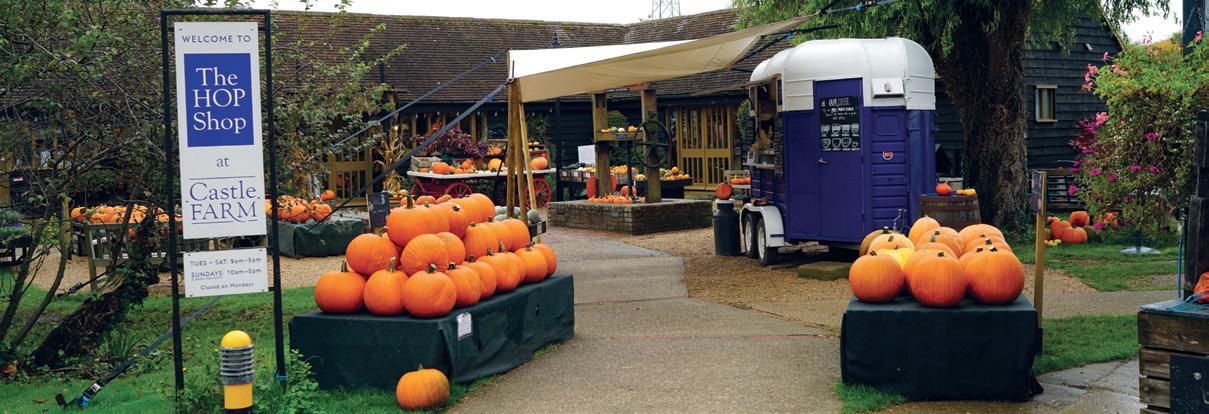

This initiative emerged from the Darent Valley Farmer Cluster, established by William and the farm’s immediate neighbors in 2022. Initially focused on enhancing environmental and higherlevel stewardship schemes, the goal was to coordinate efforts for a greater environmental impact.
“The idea was that by working together, we could achieve more,” William explained.
Before embarking on a project, they secured funding from the Farming in Protected Landscapes programme, which allowed them to conduct habitat surveys across all the fields involved. In the summer of 2022, the government launched the landscape recovery option within the Environmental Land Management scheme, focusing on river-based projects.
Despite being in its early stages, the cluster, with help from Kent Wildlife Trust, applied for this new funding and, to their surprise, succeeded. Two years later they are finalising plans for significant landscape and land-use changes along the upper and middle reaches of the River Darent between Westerham and Farningham.

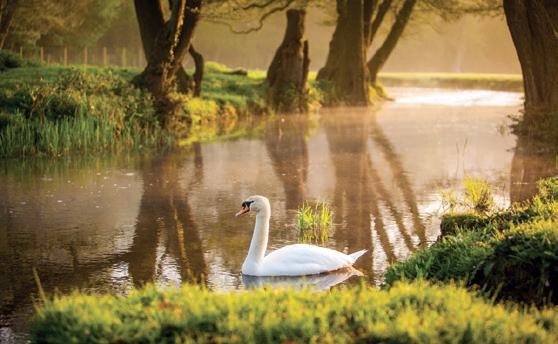
Each landowner has designated specific fields to be used for the project, amounting to 1,200 hectares. A key objective is to restore the river’s natural flow by removing barriers and returning it to its original valley base. Over time, the river had been moved up the valley sides to power water mills.
Re-meandering the river is a key strategy that will slow the water, reduce downstream flooding and help recharge the chalk aquifer and increase biodiversity. Reconnecting the river to its floodplain also creates a more dynamic ecosystem, as Crispin explained, moving it beyond the "flooded vs. not flooded" binary.
The main aim of the project is to boost biodiversity, thereby improving habitats for fish, plants and insects that depend on river and floodplain ecosystems. “There’s growing pressure on wetland insects, as wetlands have become much rarer,” William pointed out. The group hopes to secure additional funding from natural capital investments like biodiversity net gain and carbon sequestration.
• 450-hectare family farm
• 40 hectares of lavender
• Arable crops include winter wheat, winter barley, winter beans, winter linseed and spring oats
• Hop garden for growing hop garlands for interiors
• PYO sunflowers
• Pumpkin patch
• Heritage orchard of Norfolk Royal (planted in 1969) and Cox apples
• On-site Castle Farm Shop opened in 1985 and expanded over the years - open Tuesday to Sunday.
• Farm tourism during lavender season
• Grass-fed beef sold through the farm shop
• Started a pedigree Welsh Black Suckler herd with plans to build up to around 40 cows
• Average nine to 10 tonnes per hectare on winter wheat this year
• Two years into the Darent Valley Landscape Recovery Pilot Scheme

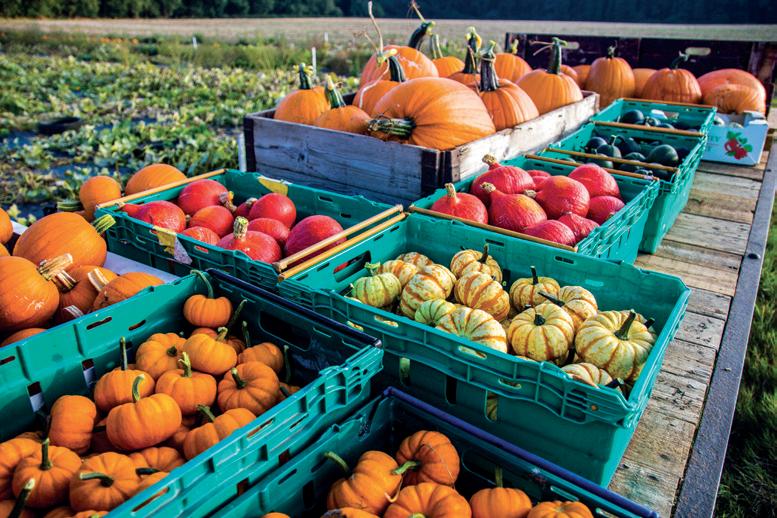


Participating in the landscape recovery project has prompted the family to rethink how it manages grazing fields, especially the floodplain meadows at Castle Farm and steeper hillsides over at their tenanted farmland, not included in the landscape recovery scheme.
Previously, the family fattened store cattle on a mix of grass and maize silage over winter. Now, the focus is on managing grasslands for conservation, with plans to join the Sustainable Farming Incentive’s (SFI) species rich grassland scheme (GRH6) and native breed supplement (SPM2).
To support these goals, they introduced a Pedigree Welsh Black Suckler herd. “They’re docile and adaptable, perfect for our sustainable, grass-fed beef vision,” Crispin said.
We headed out in Crispin’s pickup to see a group of recently purchased heifers from a pedigree breeder in Wales. Friendly and approachable, they lived up to their reputation.
Next, we toured the heritage orchard, planted by Crispin’s grandfather in 1969. Norfolk Royal apples dominate, with some rows of Cox. The orchard now supports pick your own (PYO) activities and the apples are
FARMING AND ENVIRONMENT
FOCUSED JOURNALISM AND DIGITAL CONTENT CREATION
Storytelling through interviews, features, case studies, photography and videos.
For enquiries contact Nigel Akehurst via email on nigel@indiefarmer.com
Instagram @indiefarmer www.indiefarmer.com


sold in the farm shop or pressed into Castle Farm Apple
Lavender tourism is another key aspect of the farm, with tens of thousands of visitors arriving for guided tours and picnics during the summer lavender season. This influx of tourists has been a major boon, especially after demand from fragrance companies dipped during Covid-19. Over just two weekends this year, visitors of 97 nationalities were recorded.
We also passed the PYO sunflower field, which has quickly become a hit with visitors, and we stopped to see the pumpkin and squash patch beside the traditional hop garden, used to grow hop garlands.
Returning to the farmyard, Crispin explained their diverse arable crops, including winter wheat, barley, beans, linseed and spring oats, and the various cultivation methods they use; from ploughing to no-till, depending on conditions.
He said they were far from a full regen system but were open to the arguments and techniques, adding that they plant cover crops and use organic manures extensively across much of the farm every year, including dung, distilled lavender compost and sewer sludge.
Despite a tricky weather year, he said average yields had held up well at around nine to 10 tonnes to the hectare. In a good year they might get 10 to 11, while a bad year would be between eight and nine, he added.
When discussing the SFI, Crispin expressed frustration at the slow rollout of options. He also commented on the recent DEFRA underspend of £358 million, suggesting that farmers weren't to blame for delays in SFI uptake, but that that the slow roll out was.
As my tour of Castle Farm concluded, I reflected on the Alexander family's impressive ability to blend tradition with forward-thinking sustainability. With projects like the Darent Valley Landscape Recovery and its expanding Welsh Black herd, it's clear that Castle Farm is wellpositioned for a sustainable and successful future.
We head into winter off the back of another challenging year and with the backdrop of a new government, and so perhaps even more unknowns. This environment can create a good reason to either delay or accelerate trading and/or capital plans depending on your situation. In my view there has never been a more important time to get prepared for the year(s) ahead.
Planning ahead in farming is never an easy job, given the endless variables involved. In recent years, while we may have seen some better output prices, inflation has taken its toll on costs and of course we saw significant increases in interest rates from 2022 onwards.
Given these variables and the ongoing uncertainty over what the future will bring, planning your finances carefully and understanding how best to navigate them has never been more important.
With all the challenges of the day job, budgets and forecasts are not the usual priority for many farmers, but they are
ever more essential. The pace of change is quickening and for most businesses there are many more moving parts.
Don’t forget DEFRA’s Farming Resilience Fund, which can provide access to consultants to support farmers through the planning and Sustainable Farming Incentive (SFI) transition process. This is useful and can also provide a helpful challenge by way of the consultant going through your numbers, making it well worth undertaking.
It is also useful, though, to make forecasting and business planning more part of the routine of the business, to help avoid surprises and to understand better the impact of decision making on the future of the farming enterprise. With a robust base line forecast, farmers can then spend some time considering

the ‘what if?’s, normally allowing some quick feedback and a considered view on how the business may adapt to differing circumstances.
Farming is changing at pace, so it’s important that all farmers look forward and understand what’s coming down the line – and, even more importantly, how this will affect their own business. Those who keep on top of the numbers and drill down into their business in search of continuous improvement will be best placed to go forward sustainably and successfully.
Looking after our land and environment while producing sufficient food is a tough balance, but our industry does have a bright future. We must just recognise that it will likely be very different from the past, but a clear plan allows the greatest chance of being at the top of our game.
ELLIS, B.SC. PMIAGRM






With 2,500 acres of land in their care, Sue and Jules Green have amassed plenty of experience of agricultural buildings – and they know a good grain store when they see one.
The couple, who own the Montreal Estate near Sevenoaks, went out to tender when they decided to boost the efficiency of the estate’s woodchip business by commissioning a new six-bay store adjacent to an existing open-fronted building.
“For various reasons we weren’t able to go back to past suppliers but were looking for someone new,” Sue explained. “We wanted a local builder of the right size with whom
Sue Green

we could develop an ongoing business relationship and on whom we could rely to deliver what we wanted on time and on budget.”
After drawing up a shortlist of suppliers, they went to visit Graham Elgar, of Ashford-based G J Elgar Construction Ltd. “We were impressed with the quality of work and the design of the stores he had put up, but more importantly with the little touches that had been finessed into the job to make life easier for the customer,” she said.
“While it was basically a standard barn, there were lots of tweaks to make things work more smoothly, fit better and generally add value. The product was first class and Graham and his team proved
to be a delight to work with.”
The barn, 36m by 19m, was finished in time for harvest “and the invoice didn’t deviate from the quotation by a single penny”, said Sue, whose father Alan Miskin was a dairy and arable farmer locally.
The historic Montreal Estate, owned by the family of General Jeffrey Amherst, who accepted the French surrender at Montreal in 1760, until early in the last century, was bought by Sue and Jules in 2012.
The couple, who previously both worked in the city, added the 2,100-acre estate to an existing 400-acre holding nearby and now run a successful arable, forestry and livestock
operation on the land. They have a pedigree herd of Sussex cattle and host conferences and events in the ultra-modern estate office building at Penn Farm.
The original farm buildings at Salters Heath have been repurposed into 13 business units in five fully accessible buildings, while the estate also has 20 rental properties and a flock of 50 ewes.
The couple, who “sadly had no choice but to shut the dairy on day one”, grow the usual cereal crops including wheat, oats, beans, barley and oilseed rape on 1,000 acres of arable land and also have a number of other contract farming arrangements.


The new barn built by G J Elgar Construction was aimed at streamlining the other major part of the business, a sustainable forestry operation that covers another 1,000 acres supported by some eight kilometres of new trackways.
“We had to clear out and clean the existing woodchip store each June so that we could use it to store grain through until September,” Sue recalled. “Not only was the store open to the elements, but the dual use meant we were losing out on four months of woodchip sales each year.”
Building the new, purpose-built grain store next door gave the estate the storage it needed and allows the biomass business to continue all year round, as well as removing the hassle of cleaning it out annually. “It has given us so much flexibility,” Sue added.
Alongside timber production, The Montreal Estate supplies both chestnut and softwood chip for biomass boilers, all harvested locally as part of a comprehensive, fully accredited woodland management plan.
The estate’s 55 pedigree Sussex cattle are descendants of the Mayfield herd. A huge amount of effort is put into showing the bulls and heifers, which can be seen competing at most of the major shows across the region, sometimes being awarded Breed Champion. The estate’s top pedigree Sussex bulls are for sale and the beef is sold locally.
“Showing the cattle relies on a big investment from the estate, but it’s vital for public engagement, which is an important part of our vision,” said Sue. “We undertake one public event a year, sometimes Open Farm Sunday, and last year we hosted one day of the Royal Forestry Society’s annual meeting.

• Building conversions
• Sheeting and cladding
• Refurbishment and change of use
• Demolition and asbestos removal
• Groundworks and drainage
• Concrete flooring and external concrete
• Concrete frame and steel frame repairs
• Internal stainless-steel drainage
• Insurance and general repairs
• Guttering and repairs


Meanwhile the new relationship with G J Elgar Construction looks set to be another long-term feature of the estate. “The team has already been back to do some more work for us,” Sue said. • Steel frame buildings
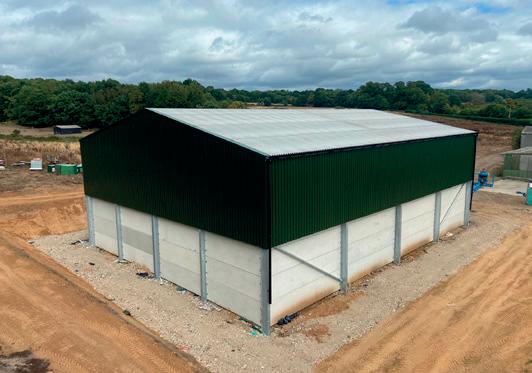



Knowledge




Specialists in controlled atmosphere stores
Rapid chilling systems for soft fruit and fresh produce
Secondary cooling systems with energy efficient defrosting using air source heat pump technology
Retrofitting of existing high cost electrical defrost heaters with air source heat pumps
Electrical engineers and contracting
Refrigeration and Electrical service, maintenance, and breakdown cover




Testing and certification to NICEIC
Mains power solutions for distribution and installations
Temperature controlled wine storage solutions using DX or Secondary refrigeration with heating options
Qualified to install EV chargers
Refrigeration gas leak detection systems
F-gas compliance and record keeping
Refrigeration system controls with remote monitoring



“When you’ve extended your twobedroomed bungalow so many times that there’s more extension than original property and it’s getting awkward to find your way around, it’s time to start again with a properly designed five bedroomed place that has everything where you need it.”
Sean Charlton’s metaphor is an apt one to explain the changes at Rumwood Green Farm, where work on a new 7,500 sq m packhouse and distribution building marks the next chapter in the fruit grower’s remarkable expansion.
Photos:
The new building has been designed to allow Rumwood Green Farms Ltd, trading as Charltons, to consolidate its top fruit and soft fruit operation in a new, free-flowing process from chilled intake through the grading and packing lines and out via new loading bays to the supermarkets it supplies.
“It will make the operation smoother and more efficient as well as improving health and safety on the site by reducing the number of fork lift movements that are currently needed to link up the various processes,” Sean explained.
It is the latest stage in a remarkable two
decades of growth for the grower and packer, which now grows much of its top and soft fruit on land it has bought or rented nearby as the controlled atmosphere stores, packing line, distribution hub, pickers’ accommodation blocks and offices take up much of the business’s original home at Rumwood Green Farm, Langley, near Maidstone.

Charlton’s now grows around 9,000 tonnes of Gala and Magic Star apples and 8,000 tonnes of strawberries, with some raspberries and cherries, on 13 sites within a five-mile radius of the farm, bought by Sean’s father Philip in 1968.




Around 1,500 tonnes of the soft fruit total is grown in heated glasshouses in Norfolk after Charlton’s bought two sites, one at Hempnall and one at Martham, in 2020 to extend its soft fruit season. “The heated glasshouses give us an extra month of soft fruit either side of our Kent operation,” Sean explained.
In a transformation that represented a significant investment, the company has now consolidated its Norfolk operation – Berries Direct Farming Ltd – on the Hempnall site, building a new, glasshouse heated by biomass boilers and a new packhouse and cold storage building to accommodate future expansion.
As the fourth generation of the growing and
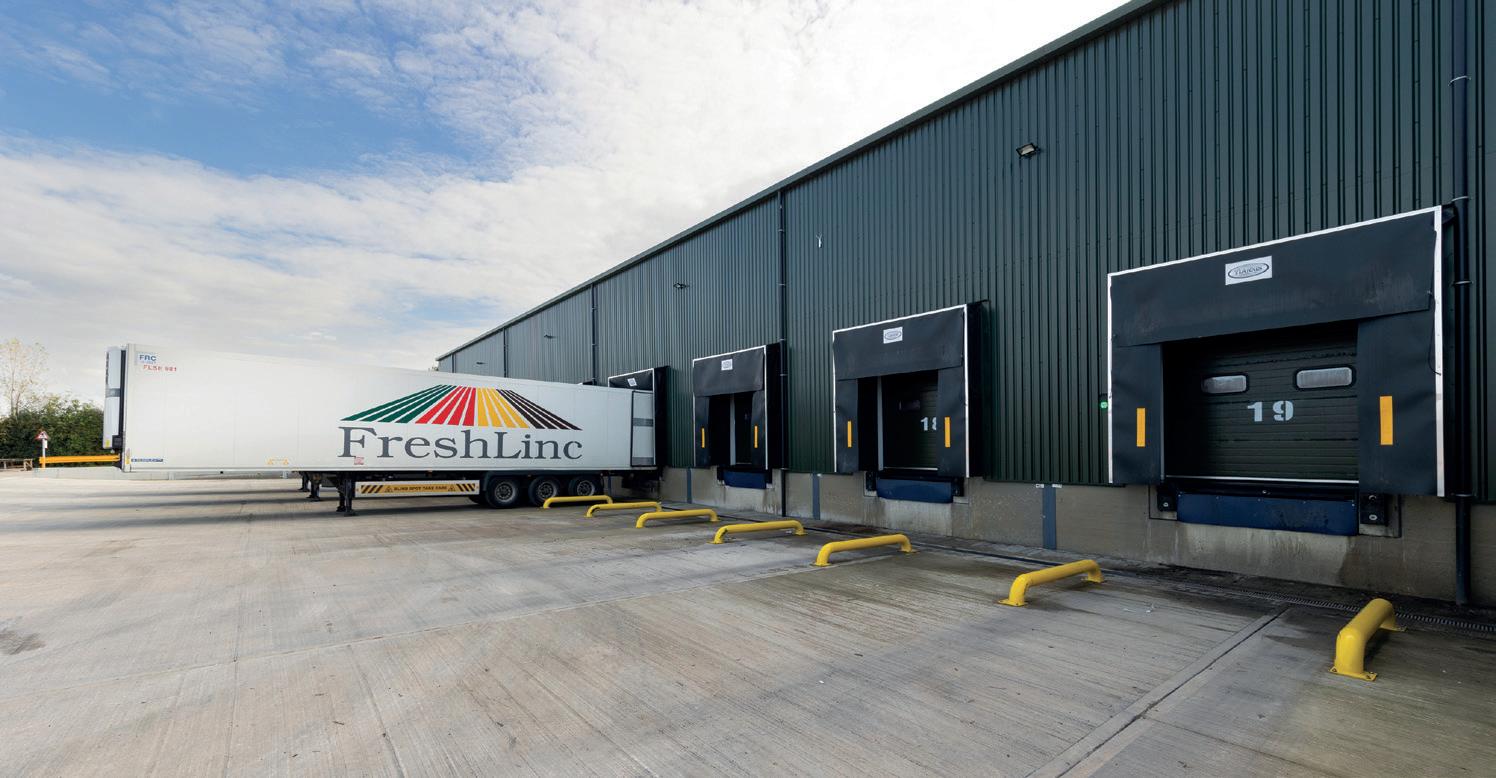
packing business, Sean is continually looking at ways to streamline the business, increase efficiency and provide year-round employment for a loyal workforce that he stressed played a large part in the success of the operation. That loyalty continues with the choice of contractors carrying out the regular extensions and new building at the site, with Torran Construction having been responsible for the groundworks, drainage, concrete roadways and power-floated floors at Rumwood Green Farm over the past 20 years.
Alongside its own fruit, grown on some 1,400 acres of land, including 130 acres in Norfolk, Charlton’s packs for a number of other UK growers as well as
fulfilling a number of third-party packing contracts. The business supplies most UK supermarkets, either with its own fruit or as a packhouse operation for other growers.
When he joined the family business in the early 1990s after obtaining a diploma in horticulture from Hadlow College, it owned 35 acres and rented a further 30. The farm mainly produced top fruit, with a packhouse and a few acres of strawberries to keep the operation busy during the summer.
Sean was keen to build the business around the packhouse and grow more strawberries to extend the season for the workforce, and that combination has been at the heart of the business ever since.




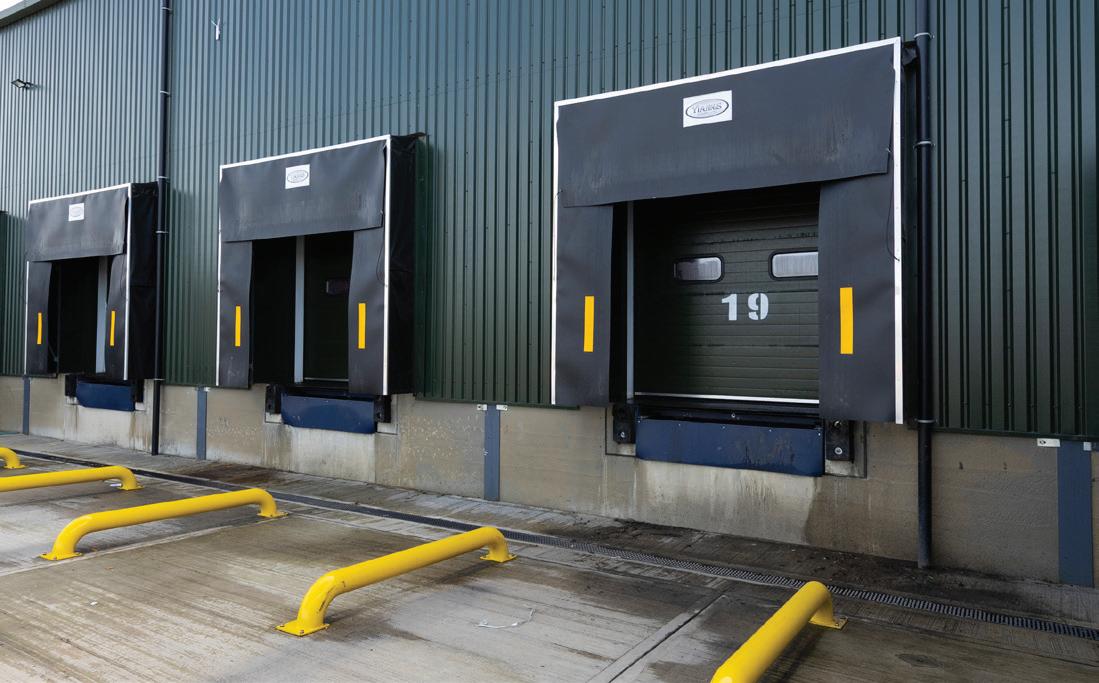
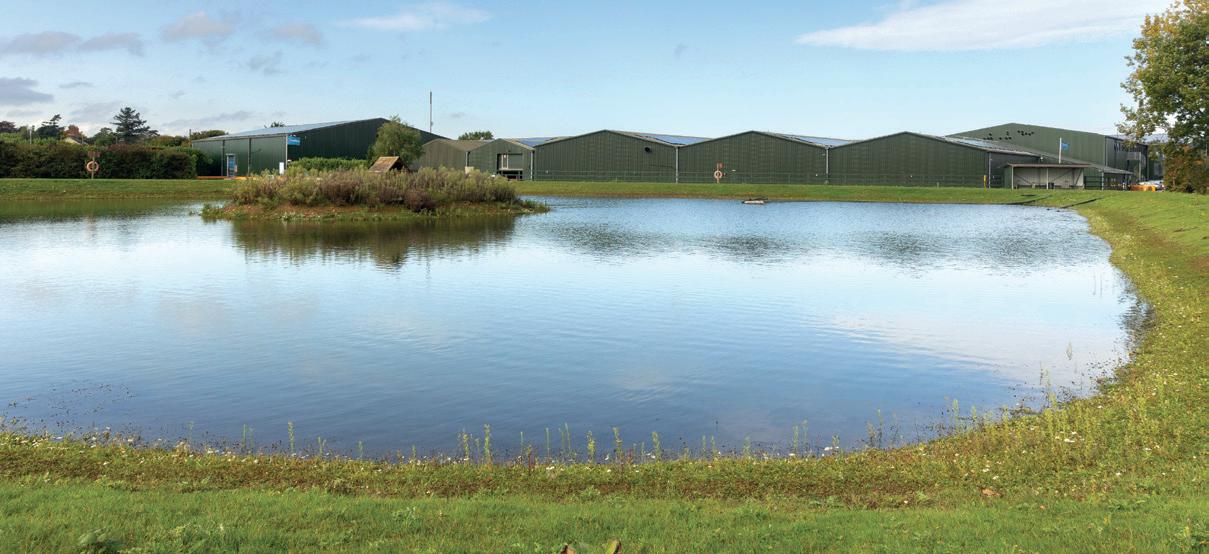
The first packhouse building was erected in 2003, with “extension upon extension” following in 2005, 2007, 2009, 2011, 2015, 2018 and 2023. “As the business has grown, so we have had to add new buildings, extend others and generally work hard to keep up with the rising demand for our fruit,” said Sean.
The unintended result of the various extensions was an operation that spanned two halves of the site and meant some awkward forklift movements to bridge the various gaps in the process.
“We had extended so many times that we felt we had to regroup the top and soft fruit operation on one side of the farm to make the throughput smoother, improve safety on the site and boost productivity,” Sean explained.
“Hence the new building that will allow us to grade, store and pack top and soft fruit under the same roof, linking up with existing controlled atmosphere stores and other facilities to accommodate increasing demand and volumes.
“The pre-sizer will be moved to its new location, which is currently being used as a temporary packaging store, next summer, while the buildings being vacated by the move will be repurposed for packing other produce.”
Sean again called in Torran Construction for the groundworks, dock levellers and road building on the site. “I’ve used Torran for the past two decades and always been very happy with the quality of the work,” he explained. “They always understand what we are trying to achieve, they do a great job and they fit in with our often-tight construction windows.
“We value loyalty here at Charltons. It’s how we have built up such a great team, and it extends to our contractors as well. We turned to Torran for the groundworks ahead of the steel frame erection, for the new roadway around the site and for the complex drainage that takes the rainwater from our roofs and feeds it into a large pond before it is pumped into a reservoir and then used for irrigation.”
Sean’s “great team” includes head of farming operations James Weeks




and head of packing and commercial operations Robert Amelal, who joined Charltons 27 years ago as a strawberry picker. “He came around asking for a job and caught me at an off moment,” Sean recalled. “I could easily have said ‘no’ but instead I said: ‘come back tomorrow’. He proved to be a great picker and has since moved through the ranks –always reluctantly – to become one of my right-hand men.’’
Other contractors who worked on the recent expansion included AS Buildings, which erected the steel-framed building, SCS, which provided the white walling, and Orchard Cooling, which carried out the refrigeration and electrical work.
While the current expansion is impressive, it’s clear that it won’t be the last phase, as Charltons continues to grow. “You have to run to stand still in this industry,” said Sean. “If not, you get left behind.”

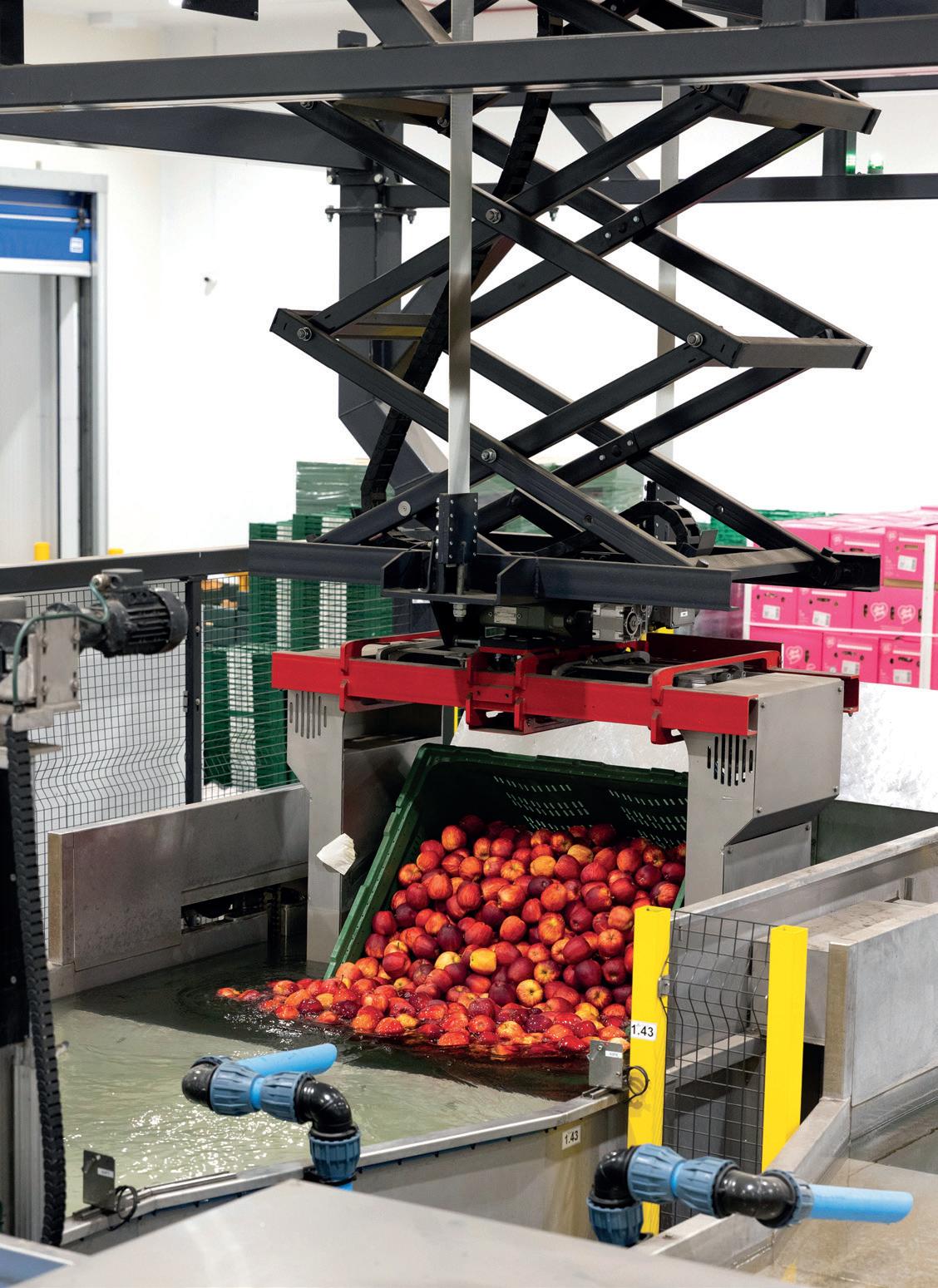


With over 40 years of experience in the industry combined with our expertise in design, health and safety, erection and groundworks we make sure that every project runs smoothly and efficiently to a high quality and standard.

Unveiled by Vineyard magazine in 2021, this celebration of UK vineyards, growers, winemakers and wines has grown year on year, with more stands, more features, more opportunities to do business and, of course, plenty of great wines to sample.
Organisers this year took the brave decision to add a third hall to the show, held at the Kent Event Centre in Maidstone, and were rewarded by an impressive uptake from exhibitors, with the result that visitors will be able to chat to representatives from around 130 different companies at this year’s event.
From viticulturists to label designers and from machinery dealers to specialist equipment manufacturers, the Vineyard and Winery Show will bring together a huge range of suppliers, advisers and potential collaborators.
“We increasingly hear from people who have done real business at the show,” commented Vineyard publisher and show director Jamie McGrorty. “They chat to like-minded people, discuss ways of working together, come up with plans and do deals, all in the friendly and supportive atmosphere the show generates.
“We are also expecting a number of product launches again this year, and the wide range of exhibitors, seminars and professional help on offer under one roof makes this year’s show the place to be for anyone connected with this industry.”
At the heart of the show, of course, is the wine, and there’s no shortage of that as the UK
Like a fine wine, the Vineyard & Winery Show has developed and matured over the years – and after four years in the cellar, the 2024 event on 20 November promises to be something really special.
continues to produce wines that rival the best in the world, particularly when it comes to the sparkling variety.
This year’s innovations include a new approach to the ‘wine hubs’ that have proved so popular in past years by giving visitors a chance to sample some of the best vintages produced in the country.
For 2024, the hubs have been separated into three distinct areas, providing more focused opportunities to sample wines of a similar type.
There will be a hub featuring WineGB’s Golden 50 wines, another featuring world renowned wine writer Matthew Jukes’ favourite 36 wines from the past year, as featured in Vineyard, and another featuring more than 25 Piwi wines.
“Modern Piwi varietals, with their increased
disease resistance, are becoming more and more popular with growers and will be given a more prominent role at this year’s Vineyard & Winery Show,” said Jamie. “Last year’s Piwi wines were predominantly grown and bottled overseas, but this year’s selection is of UK-grown wines, so our visitors will know how they perform in our climate and soils.”
Pattingham Vineyard’s Norton Brook 2022 highlights the rise of Piwi wines, with its 85% Solaris and 15% Siegerrebe blend good enough to have earned it a gold medal in this year’s WineGB awards and a place in the show’s Golden 50 hub.
WineGB’s ‘Golden 50’ wines have been selected from 123 UK wines that have won Gold medals across competitions during 2024,

including: Decanter World Wine Awards, IWSC, The Champagne and Sparkling Wine World Championships, Sommelier Wine Awards, London Wine Competition, Sommeliers Choice Awards, Wine GB Awards and the Welsh Wine Awards.
Exhibitors, which will include professionals such as lawyers and accountants as well as big-name machinery dealers, packaging experts and winery suppliers, will fill the John Hendry and Maidstone halls at the event centre along with a temporary – but solid – additional hall built specifically for the event.
“We have been overwhelmed by the response from exhibitors, some of whom will be at the show for the first time having realised what a great opportunity it is to meet growers and other potential customers,” said Jamie. “With things getting busy, we decided to add temporary extra space and were delighted when that was quickly snapped up, too. Rest assured that while temporary, it will be warm, dry and well-lit!”
The 3.15pm wine tasting of Piwi varieties will be curated by Defined Wine and sponsored by Kent-based branding agency Oak Creative. It will be held in the tasting marquee.
With Piwi wines very much to the fore, Italian nursery Vivai will be at the show displaying some of the wines they have produced from bespoke vines grown ‘to order’ based on the terroir and climate specified by the grower and the disease resistance required. After creating the specific vine, Vivai produces a small batch of wine that the grower can taste before buying and planting the vines.
Other first-time exhibitors that will add to the buzz around this year’s show include Chichester Farm Machinery, which offers an impressive range of tractors, mowers and ground care equipment, and Willis European, which has more than 50 years’ experience in supplying brewing, bottling and process equipment.
Kreston Reeves will be hosting a seminar
MATTHEW JUKES’ STRUCTURED WINE TASTING SPONSOR
HOSPITALITY SPONSOR

WINE HUB SPONSOR
SEMINAR SPONSOR
PIWI WINE TASTING
HOSPITALITY SPONSOR

breakfast at 8.30am, while the full day’s fascinating seminar programme will feature three talks and a keynote address by Patrick McGrath MW.
With four decades of experience in the wine trade, Patrick passed his Master of Wine examination in 1993 and became managing director of wine distributor Hatch Mansfield a year later. He is also the co-founder of Champagne Taittinger’s English estate, Domaine Evremond.
The seminar programme, sponsored by Ferovinum, will continue with the launch of WineGB’s three-year strategy and a presentation of the organisation’s work-plan by chief executive officer Nicola Bates.
A panel discussion entitled Future Climate Impact on Vineyards: Insights and Updates will be led by Professor Steve Dorling of Weatherquest and Dr. Alistair Nesbitt of Vinescapes, who will deliver an update on climate predictions and the impact on viticulture.
VISITOR BAG SPONSOR
GLASSWARE SPONSOR SPONSORS
HOST OF PIWI WINE TASTING
SEMINAR
BREAKFAST SPONSOR

Communications manager Phoebe French will then talk about the Innovate UK-funded frost project, which began earlier this year, with a representative from Plumpton College providing an update on its work focusing on different grape varieties and frost tolerance. The final session of the day will focus on sales, specifically the importance of restaurant sales.
The ever-popular Matthew Jukes’ winetasting masterclass at 1pm will be sponsored by Gullands, while Orchard Cooling and OnePay are jointly sponsoring free coffee for visitors throughout the day. Refreshments will also be available throughout the event, which begins at 9am and closes at 5pm.
Headline sponsors of the event are Core Equipment, Hutchinson’s, Vitifruit, Autajon, NFU Mutual and VineWorks, while Rankin is again providing the popular visitor bags and Agrii is sponsoring the tasting glasses.
The Vineyard & Winery Show will be an unmissable event for anyone working in viticulture and wine production in the UK. The show takes place on 20 November 2024 at the Kent County Showground, Detling, Kent.
Organised by Vineyard magazine and supported by WineGB, it will be an invaluable opportunity for all viticulturalists, winemakers, suppliers and the trade to come together. There will be a packed programme including a series of seminars from WineGB, tastings

of the UK’s top wines, lots of machinery and equipment to see – as well the opportunity to network with peers.
To register for your free ticket go to ww.vineyardshow.com

Warehorne Vineyard set in the Kent countryside is strikingly pretty. Vines fully laden with ripe bunches of red grapes are to be seen either side of the driveway as visitors arrive at the site a few miles outside the bustling town of Ashford, Kent. Views from the site stretch across to Dungeness and the vineyard wraps around the buildings so the outside world literally disappears.
Warehorne Vineyard however has depth and interest far beyond the cosmetic beauty of the site. In 2020 Peter Constable decided to plant vines on land that surrounded his family home, a former derelict oasthouse in the Kent countryside.
Peter said: “Twenty years ago the oasthouse was without electricity or water and we initially bought it with an acre of land from a sheep farmer.” Peter and his family became friends with the land owner and when a decision to sell the land was made the land owner offered the land to Peter. “The oasthouse was left over from the days when this land had been used to grow hops and although it had been a sheep farm for 99 years, if historically it had been used for hops I knew it would also be good for grape vines,” said Peter.
After many years spent thinking about the
prospect of planting a vineyard Peter was able to purchase the necessary land and initially 15,250 vines were planted by S J Barnes.
This initial planting was predominantly Pinot Noir but also consisted of Chardonnay, Pinot Gris and Pinot Meunier. Interestingly this initial planting contained a small plot of 300 Divico vines. “I wanted to plant Piwi varieties but found it very difficult to source them, 300 was all I could get,” said Peter. “At that time I tried to go direct to the supplier in Switzerland but there was a language problem,” he added.
Peter always had the intention that Warehorne Vineyard would become known for producing English red wine, he explained: “Right from the beginning I wanted to make sure that we produced more red wine than white and rosé combined.”
In a country that is still considered a
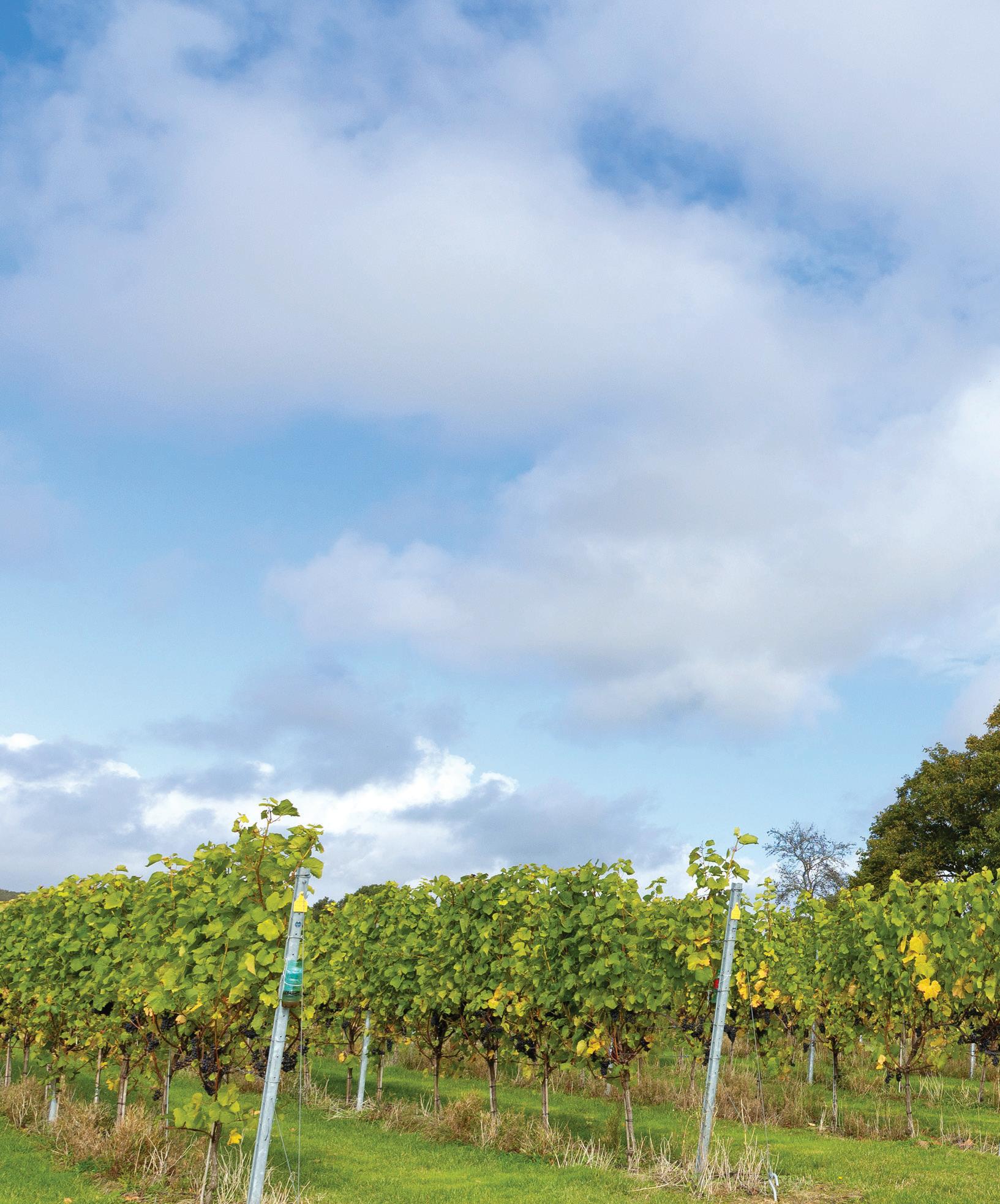
marginal climate for winemaking and with premium English sparkling wine gaining international recognition this determination for Warehorne to produce red wine seems at first glance both remarkable and brave. Peter’s explanation for this decision is both insightful and logical.
“In 2023 there were 21.6 million bottles produced with 76% of that being sparkling and 23% being still (of that 23% only 13% was red) with an additional 1% including products such as vermouth. So that means that red wine was only 2.99% of the overall production figure for the year,” he explained.
Peter works as a freelance IT consultant which has allowed the gradual organic expansion of the vineyard. “I have to work to pay for the planting, the trellising, the vines…it has been a continuous struggle,” he said.
Sitting in the late September sunshine surrounded by vines the struggle has certainly had benefits. “In 2021 I managed to plant 2,000 Caberet Noir vines and in 2022 8,000 more Divico vines were planted,” Peter said. All the vines are planted on a single guyot, Pendalbogen system with the arched style allowing for even growth.
Peter’s determination to realise his dream of planting Piwi red varieties once again saw him directly contact the supplier in Switzerland arranging for the importation of the vines himself. “This is currently believed to be the largest planting of Divico in either England or Wales, and 2024 is the first crop,” he added with a smile.
For the first crop from these 8,000 vines the results are impressive but Peter is not surprised as the initial 300 Divico vines planted in 2020 have given him experience to understand how this variety will perform on the site. “If they are cropping at 2kg a vine in the first year it will produce 4kg-5kg a vine in the next year,” said Peter. His analytical approach to the vineyard gives him a grasp of production figures that is truly impressive. “In their second season 300 vines produced 1.49 tonnes, averaging 5kg a vine,” he continued. For the first year to ensure the young vines are not stressed half of the bunches are removed. “The vines produce four bunches on each shoot so we removed half of the bunches.”


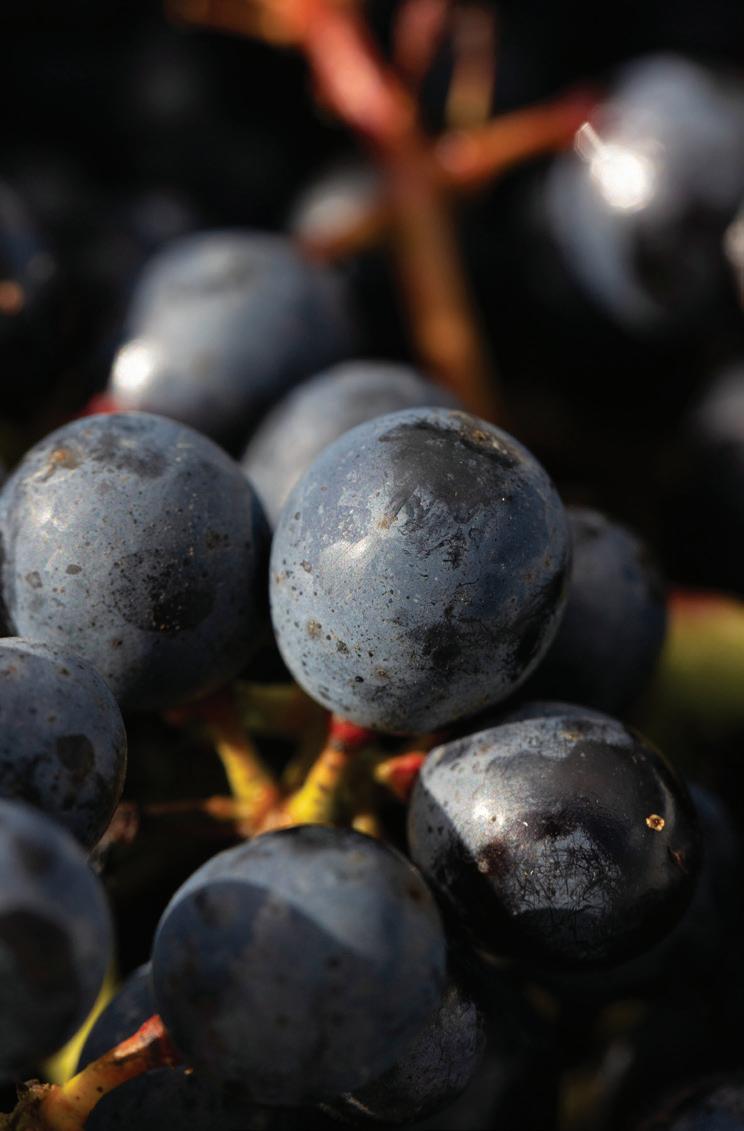


DIVIVO RED AT THE VINEYARD & WINERY SHOW ON 20 NOVEMBER

With both Caberet Noir and Divico growing on the site Peter is ideally placed to discuss the differences between these interesting Piwi varieties both from a flavour profile point of view and a viticulturist perspective. “I personally feel that Divico is a little bit fruitier than Caberet Noir but they are very different vines.
“Divico are extremely vigourous vines, a little bit late in starting with a tendency to grow sideways. If you do not continuously manage the growth the vines grow from one bay into another. The Divico vines also give an amazing amount of fruit.
“The first harvest of Caberet Noir took place in 2023 and 3.5 tonnes were harvested from 2000 vines so that was about 1.5kg per vine, which is still very good for a first harvest. I do think last year was a good harvest and levels are down this year. We are a young vineyard so it is difficult to look at what an average year would be but this year the vines have struggled to ripen the fruit. The leaves, bunches and berries are all smaller on the
Caberet Noir than the Divico and the vines are very upright and the canopy on balance is slightly easier to maintain.”
As a Piwi variety the Divico vines have not suffered any fungal problems at all even in such a difficult growing season. “The bunches are very loose giving protection against Botrytis,” he explained. For preventative purposes there have been three sprays across the year, one at woolly bud stage, one in late July and one in September and the vines are looking lush, green and clean. This is in stark contrast to the traditional Pinot varieties that are on this site, “they are a constant fungal challenge,” said Peter.
Growing experience of these Piwi vines has also given Peter anecdotal evidence regarding Divico and its relationship to SWD. “This area was particularly affected by SWD in 2023. We have a Burgundy clone, Pinot Noir planted alongside our original 300 Divico vines. The Pinot Noir was hit by SWD, I sprayed as soon as I was aware but it had already caused damage and I lost six
As a Piwi variety the Divico vines have not suffered any fungal problems at all even in such a difficult growing season.
rows although I was able to contain it. The Divico was right next door and remained untouched, so the evidence suggests the SWD would have flown over the Divico to get to the Pinot Noir,” he said laughing. This is an interesting observation and may have many explanations. Peter’s theory is: “The Divico have very thick skins and from my experience are therefore less attractive to SWD I have also noticed that SWD like to attack the bunches from the middle rather than the outside so I think that the open bunches make it harder for the SWD to enter.”
Pests in the vineyard are not limited to SWD. In previous years wasps have been a problem and the vineyard has taken proactive steps to reduce wasp numbers and there are wasps visible in traps around the site. (It
The Vineyard & Winery Show will be an unmissable event for anyone working in viticulture and wine production in the UK. The show takes place on 20 November 2024 at the Kent County Showground, Detling, Kent. To register for your free ticket go to ww.vineyardshow.com

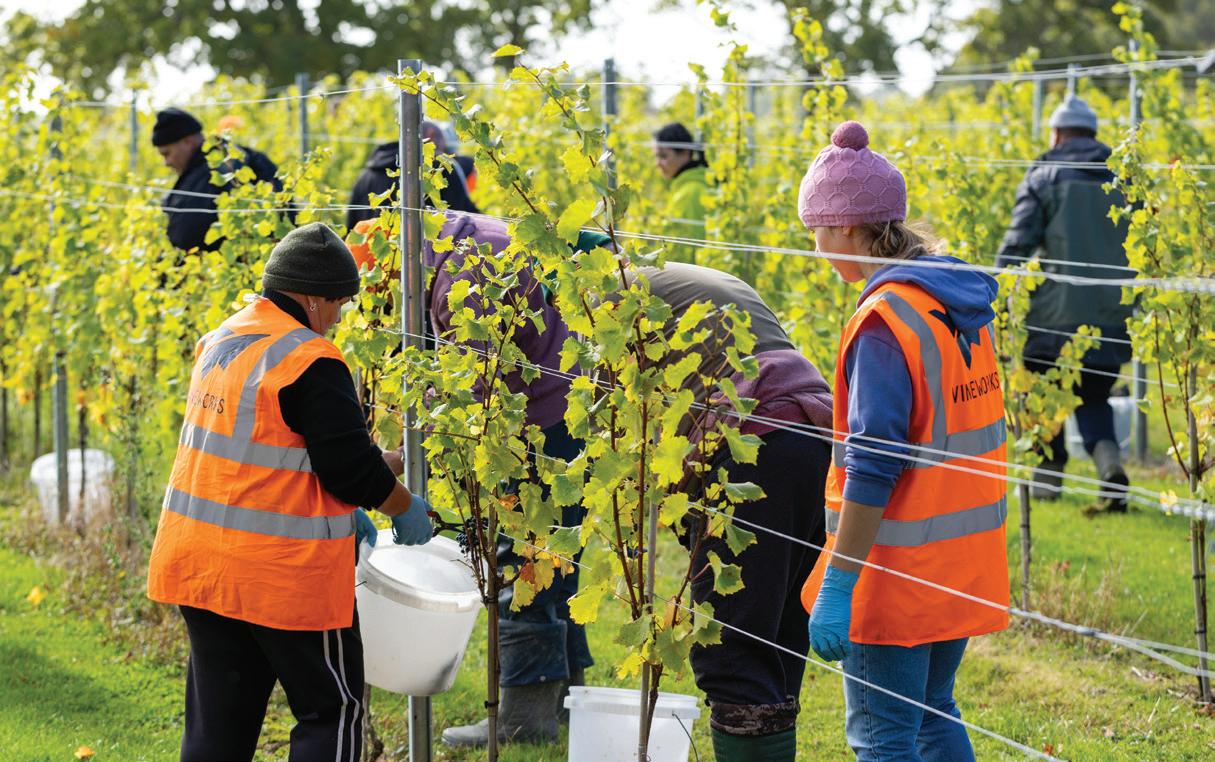

is interesting and encouraging to note that there have been no sightings at this vineyard of the invasive Asian Hornet.)
One pest that Peter has noticed are pheasants which wander into the vineyard from a local shoot and seem rather partial to the grapes but other birds are more of a problem and both kites and a bird scarer (sympathetically placed so as to cause very little noise nuisance to any neighbouring properties) are employed at the vineyard.
“There are power lines that go through the site and the starlings like to sit on them and eye up the fruit and they literally swoop down in their hundreds and gorge themselves for about thirty seconds, and then fly up again. In our first year we should have had about 1000kg from the Pinot Gris and after the birds had finished we had about 220kg left, they took 75% of the fruit,” he said.
To combat the starlings, Peter now nets the vines. Peter devised a roller system, utilising a UTV to drive the rows with the nets then clipped in place, that makes the

process of netting easier but it is still too labour intensive to net all 25,000 vines. In another example of Peter’s logical approach, the fact that there are only a small number of Pinot Gris vines (1,000) and considering their appeal to the resident starling population he made the decision that these are the vines that will be netted. “I can’t afford to lose any of the crop to bird predation,” he said.
There are rabbits and badgers “but the badgers are lazy they will only take the very low hanging fruit,” said Peter.
The vineyard has not suffered from a lack of labour availability at harvest and this year a 12 strong picking team supplied by VineWorks, efficiently harvested the Divico crop during the first week in October. The vineyard also has volunteer days at the weekends during harvest and this allows them to fully engage with the local community. Taking place on the weekend allows as many of the local community to get involved as possible and Peter spoke of the atmosphere created on these occasions.
Half of the grapes grown are sold under contract and this has allowed the small family business to fund the production of their own wines. Currently the wines are made by local winemaker Defined Wine in Canterbury under the brand name Oasthouse. “Defined Wine are the authority on making Divico wines,” said Peter.
The decision to separate the vineyard name from the brand was taken because Peter wanted to use something that immediately identified with Kent and south east England to ensure consumers could at a glance associate the wines with their geographic origin. There is also a wistful note in Peter’s voice when he talks about the oasthouse that he so lovingly turned from a derelict building into a family home that is now at the centre of a beautiful vineyard. It seems that the oasthouse and now the vineyard have become part of the family and it is therefore fitting that both should be linked together in the label for this range of wines.

The wines include a single varietal Divico which is a finalist for the Great British Food awards 2024, this is a competition that celebrates artisanal products. It is encouraging that this English red wine is attracting national attention especially since Divico is a less well known variety than Pinot Noir. Matthew Jukes has selected the wine for his masterclass at the Vineyard & Winery Show and the Divico and the Red Reserve will be available at the tasting hubs. So there will
be plenty of opportunity for visitors to the Vineyard and Winery show to discover these English red wines for themselves.
“I really value awards but the red wines were bottled too late to be entered into the WineGB competition,” said Peter. The Red Reserve is a blend of 60% Divico and 40% Pinot Noir and there is also a 100% Pinot Noir. As the vineyard reaches full production in the next few years the production of red wine will extend to 50,000 bottles of red wine.

Half of the grapes grown are sold under contract and this has allowed the small family business to fund the production of their own wines.
Peter and members of the family along with Andrew Trussell the vineyard assistant all conduct tours of Warehorne Vineyard for the public. Wine tour companies like our tour because we talk about the growth of the vineyard showing how the vines have been pruned over the years and how pruning decisions are made at year one and the following years. We explain about rootstock choices and then about varieties, we make it educational because we have found that people really want to learn something when they do a vineyard tour,” said Peter.
“Although there are a wide range of people who come on tours there are a significant number of the visitors to the vineyard that fall into the 25-35 age range, usually working professionals looking for interesting experiences. Ashford has great rail links to central London with a journey time of just over 35 minutes and so unsurprisingly many of the vineyard visitors come from the city. “Most of the visitors on the tours will buy wine, it is a very rare exception if someone does not buy wine from the cellar door.”
People on wine tours often specifically ask for the tours to include red wine. As the figures quoted earlier show there are not that many English red wines currently and “we are able to offer people three red wines. We are hoping to make a fourth red wine from Caberet Noir from the 2025 harvest.” The reaction of people taking part in the red wine tasting has given Peter encouragement. “The first thing people say when they try the Divico is: Wow I didn’t expect that.” Peter points to
those consumers who like Malbec as those who particularly enjoy the Divico. This was one of the reasons Peter was initially keen to plant Divico as the variety was achieving levels of 15% abv in Switzerland.
Peter explained that on the tours he gives the story of Divico as a Piwi grape that is good for the English and Welsh wine industry as it is suited to our climate. Whilst Peter is committed to Piwi as a “game changer” for English and Welsh wine he looks to these varieties as an addition to the traditional not a replacement.
A new tasting room was opened on site in August 2024 and commands an elevated position offering fabulous views across the vines. Like everything at Warehorne vineyard there are already future plans for the space which include kitchen facilities and a balcony

that will bring the guests such close proximity to the vines it will feel like you could reach out and touch them.
Initially Peter had considered planting a vineyard as a project that would keep him busy. “I dread retirement so now I have made sure I will never retire,” he said laughing.
Peter and his family have definitely embraced the vineyard and Peter and his son Seb, who is an analytical chemist, have both taken the oenology course at Plumpton. Although Seb works full time he still uses his skills in the vineyard. “He came home last night and was doing TA analysis in the barn (the hard way),” said Peter. “He will eventually be the winemaker and we are looking forward to the future when we can work together in the vineyard,” he added with warmth in his voice.
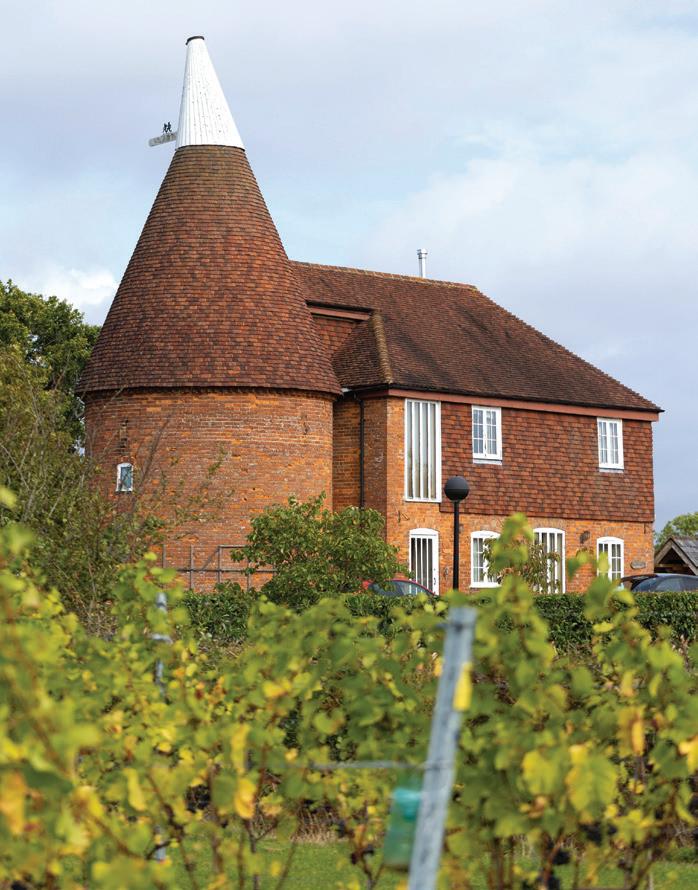

Other family members have been involved in building the website.
Peter and his family have plenty of plans for the future and the main aim is to fund an onsite winery and there is already a suitable building which could be used for this purpose. A winery combined with the possibility of machine harvesting the red grapes would mean that the fruit would move into tank within hours.
At Warehorne vineyard unique decisions have been made and whilst these decisions have a logical foundation they have been taken with a passion for good wine and a love of the land. There is so much that this vineyard has to offer both now and moving forward, Warehorne Vineyard is a place where the future does not just look rosy… it looks like a very good red.

The Vineyard & Winery Show will be an unmissable event for anyone working in viticulture and wine production in the UK. The show takes place on 20 November 2024 at the Kent County Showground, Detling, Kent. To register for your free ticket go to ww.vineyardshow.com
Patrick Delaney, who lectures in equine studies at Hadlow College, Kent’s only land-based and rural college, outlines the importance of vocational education in the land-based sector.
It’s 7am. The horses are turned out, the cows have been fed and the chickens are… well I don’t know where the chickens are, but the cat is staying right next to me, and she’s frightened of the chickens, so they must be nearby. Meanwhile, I’m sat with a coffee thinking yet again about vocational education...
This is a common recurring thought now. Who’s going to feed these animals in the future? Where is our (and their) food going to come from? Who is going to look after the land? The simple fact is that the next generation need to learn about the land, and they need somewhere to learn it.
Vocational education in the land-based sector is not just an educational pathway; it’s a cornerstone of our future sustainability and economic resilience, and I believe that the importance of vocational education in agriculture, horticulture, forestry and animal care cannot be overstated.
At the moment, the land-based sector faces a critical skills gap. Traditional academic routes often overlook the practical skills needed for modern agriculture and related fields. Vocational education fills this void by providing hands-on training tailored to the specific needs of the industry. This ensures that graduates are not only knowledgeable but also capable of applying their skills in real-world settings. Another factor is how much vocational education significantly enhances employability. Graduates of these programmes are job-ready, equipped with the practical skills and knowledge that employers in the land-based sector demand. Whether it’s a student trained in advanced horticulture techniques or one skilled in animal husbandry or equine training and management, vocational education

For anyone interested in studying at Hadlow College, there is an open morning on Saturday 9 November from 10am to 1pm.
ensures that individuals can seamlessly transition into the workforce.
We are all aware of the importance of sustainability. Sustainability is at the heart of the land-based sector. Vocational education plays a pivotal role in promoting sustainable practices by teaching students how to implement environmentally friendly techniques. Programmes focused on sustainable agriculture, for example, cover essential topics such as soil health, water conservation and integrated pest management.
Meanwhile, the economic impact of the land-based sector is profound. The farming industry alone is worth £7.9 billion (2022 government figures), with the British Equestrian Federation suggesting the equine sector is worth £5 billion (2023 figures), without even accounting for the social factors.
Vocational education supports this by creating a skilled workforce that can drive productivity and innovation. By reducing unemployment and increasing productivity, vocational education stimulates economic growth at both local and national levels. This is particularly important in rural areas such as Kent, where the land-based sector often serves
Visit www.hadlow.ac.uk/events to register or find out more
as the backbone of the economy.
One of the key advantages of vocational education is its flexibility and accessibility. These programmes are typically shorter and more affordable than traditional academic degrees, making them accessible to a broader range of individuals.
Historically, vocational education has been stigmatised as a less prestigious alternative to academic pathways. However, this perception is changing, and rightly so. As more people recognize the value of skilled trades and technical professions, vocational education is gaining the respect it deserves.
Let’s be clear, vocational education in the land-based sector is indispensable. It addresses the skills gap, enhances employability, promotes sustainable practices, supports economic growth and offers flexibility and accessibility. By reducing stigma and fostering lifelong learning, vocational education ensures that the landbased sector remains robust and capable of meeting future challenges.
In this modern world, the importance of vocational education in this sector cannot be overstated. It is a vital investment in our collective future.

It has been an immense honour and privilege to advocate for tenant farmers and the tenant farming system. I would like to thank all the forum members from England and Wales for giving their time and immense knowledge and for all their support.
Whenever I get the opportunity, I will continue to champion the right of tenants to receive a fair deal, and I remember when Sir Kier Starmer addressed the NFU conference in February 2023 and said: “Tenant farmers need a fair deal. They need to know the future is secure. They cannot plan properly if the soil beneath their feet is not secure.” I hope he is a man of his word.
By the time you read this we will have had our first Labour Government budget in 14 years, and I am sure this will have a monumental impact on both the wider economy and farming in particular. I do hope labour turn out to be supporters of farming; time will tell.
Rather sadly, Baroness Kate Rock has been dismissed from the DEFRA Select Committee by the Secretary of State Steve Reed, much to her dismay and disappointment, and as I have said before we can only thank her for the hard work she put in to the Rock Review. I do hope it will not be wasted.
I recently met Kieran Mullan, MP for Bexhill and Battle, and urged him to ask, at the recent opposition debate day in Parliament, the question: “As recommended in the Rock Review, when will a tenant farming
The NFU, as part of its reorganisation to a smaller
number of regions, has also decided to disband its various forums, so this will be my last article as Chairman of the NFU Tenant’s Forum, writes John Marland.
commissioner be announced and the other 74 recommendations be implemented.”
Tenants and those relying on tenancies represent 64% of the farmed land in this country and are immensely important. It is worrying to hear that Chris Packham organised a march on 6 October to St Paul’s Cathedral to challenge The Archbishop of Canterbury, Justin Welby, to support a call to the Church Commissioners to rewild 30% of its 105,000 acre estate by 2030. This could have a detrimental effect on all the Church’s tenants. I strongly urge all landowners to work with their tenants as they are the ones who know and work the land.
In my other role – other than as a farmer – as chairman of Farming in the Protected Landscape (FiPL) in the High Weald, I would like to highlight that funding opportunities will be coming to an end in March 2025. This deadline includes the time it takes to prepare and submit the application.

This is another role that I have thoroughly enjoyed, and I have seen the team at Flimwell and the panel approve dozens of applications, large and small, often making all the difference to people and their businesses in the High Weald.
Stay safe and well.
Respiratory problems are most frequent in autumn and winter, when calves and sheep can develop problems shortly after being housed. Damp, foggy days during the winter and a persistent damp atmosphere in the shed supports a higher level of infectious agents than dry air.
The problem is partly created by the sharing of respiratory organisms when groups are mixed. Cattle and sheep, like all animals, carry bacteria in their respiratory passages. These usually cause no harm, but if the immune response is weakened there is an opportunity for infection to take hold.
Stress is a major factor in the spread of disease because it reduces the immune
response. Livestock can become stressed by such factors as weaning, transportation, housing and/or regrouping, competition for insufficient feed, overcrowding and any management change which causes serious disturbance.
Crystalyx Easy Breather incorporates a highquality MOS (mannan oligosaccharide), which helps bind pathogens in the gut, and betaglucans which help stimulate a strong immune response, giving the livestock a chance to protect themselves against infectious challenges.
Crystalyx Easy Breather contains menthol and eucalyptus oil, which allows animals to breathe easily by keeping respiratory passages
clear, in turn helping to keep livestock relaxed. Easy Breather is not a substitute for good management, but it does provide a powerful, natural aid to help housed animals withstand respiratory challenges.
Extensive trial work has shown Crystalyx Easy Breather helps manage the incidence of coughing and respiratory irritation in housed calves and sheep, allowing them to regain their appetite after a stress or challenge.
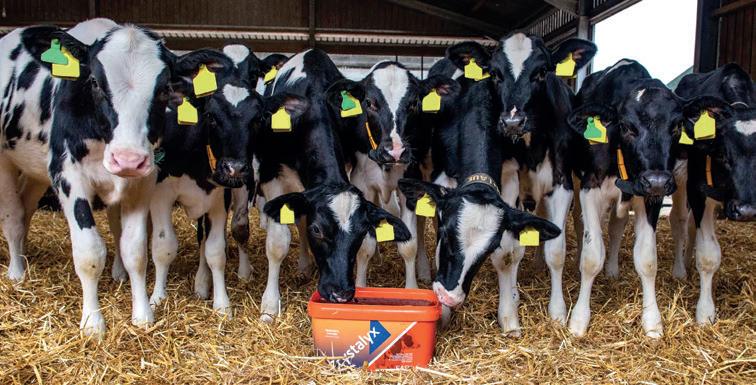
One of the constant conversations at the National Fruit Show, and not just in recent times, is the need for a sustainable return for fruit produced in the UK.
I've lost count of the number of times I've written about the need for farms to be referred to in business terms, not philanthropic ones. I've pointed out how farmers would be lauded if they were a multinational business with strong, environmentally sustainable strategies, planting crops and caring for large green spaces, how a strong asset base underpins a good business and how, in manufacturing, a confirmed order book underpins financing of the future.
Yet in farming, businesses are cut adrift. Long relationships with a commercial partner may exist, but with nothing you could show an investor. The industry has to deal with political positioning that talks about public good, environmental strategies that never mention food or farming and a lack of a strategy to ensure food security, despite ongoing challenges with international food systems created by conflict and climate change.
As we enter this winter, we face our most food insecure period since the Beveridge Act began its scoping; the second wettest year, and correspondingly second poorest cereal crop, since records began. All home-grown commodity food crops have been severely impacted, while wet weather and heavy conditions continue to hamper the top fruit harvest as I type.
We know there is a vital need to promote and protect British farming
through the diversification of crops and investment in new technologies to strengthen our farming sector. Farmers are faced with an uncertain future with regards to crop production and the regulatory landscape, especially as yields decline and post-Brexit policies evolve (or don't, indecision is almost worse, isn't it?). As a result, costs are loaded on food, further removing sections of the population from the consumer base (20% of the UK population are not mainstream retail customers, being unable to afford to walk in the door of Aldi, Asda et al, let alone Tesco).
In a recent City Harvest survey of food donors, 75% reported a moderate to severe impact of Brexit checks and charges on their business, with 71% reporting that the added burden of administrative paperwork was the most significant impact, followed by import costs (65%) and delays in receiving goods (39%).
The UK imports nearly half of its vegetables and more than 80% of its fruit. If British food businesses have trouble with post-Brexit paperwork, fees and delays, it’s going to be affecting those that import 38% of the total volume of food consumed here.
Have you written to your MP? Have you given evidence to the NFU, which is campaigning on your behalf? Have you contributed to the change that farming in the UK needs, calling for a policy to support its future and a strategy to feed our population? We all have a choice; your career choice may be a vocation and your heritage, but you have a choice and a voice to help ensure it’s there for the next generation as a thriving business.
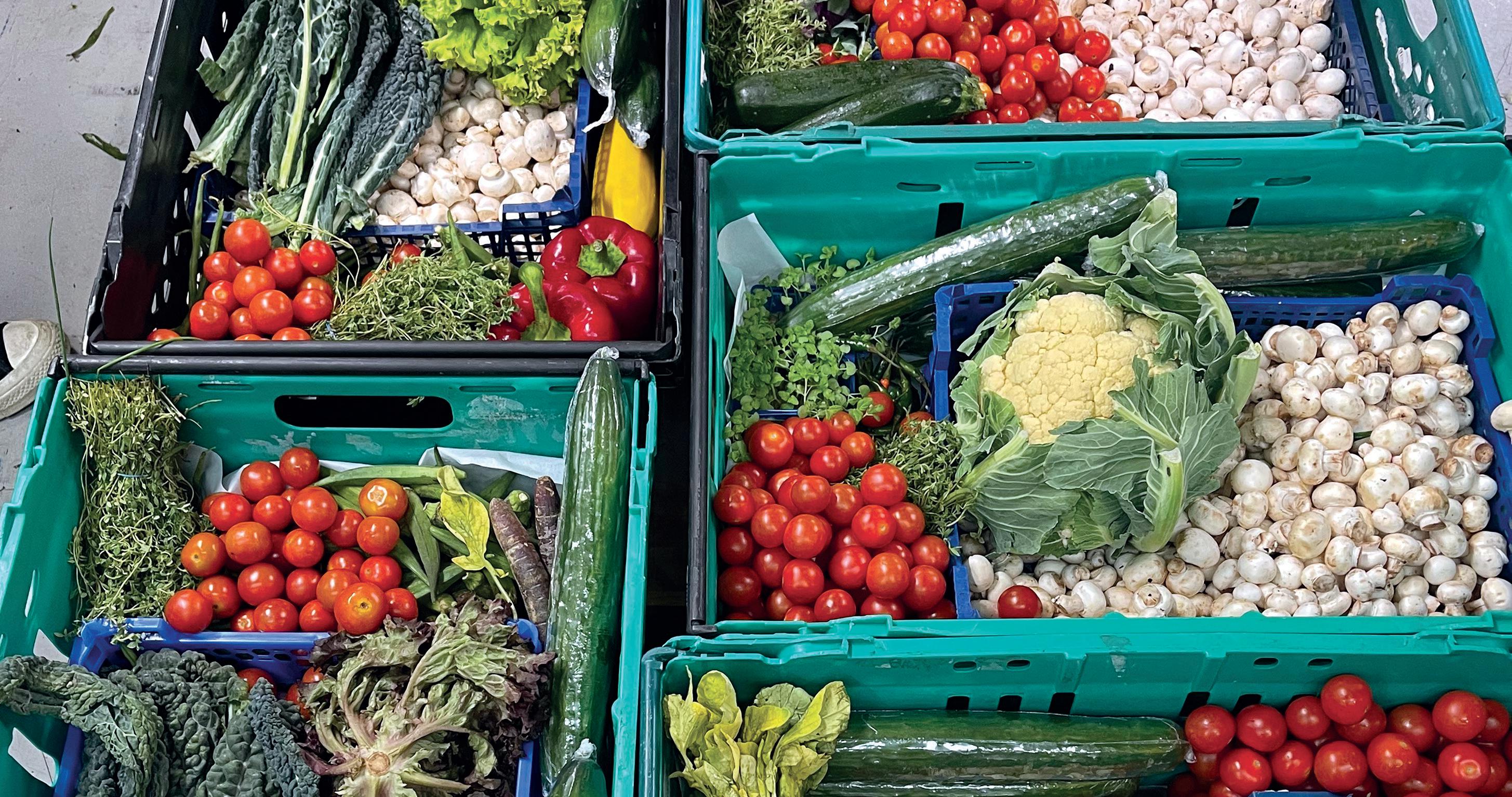

ARA g S Chair Fruiterers Awards Council
In the second part of this climate change series, I will review the role of alternative farming systems and how they fit into the wider, long-term landscape of farming.
Organic farming is set apart from other farming schemes such as ‘regenerative’, as there are strict rules and guidelines to follow, especially if the produce is to be labelled as ‘organic’. The overarching aim of organic is to refrain from using artificial substances, including synthetic pesticides and fertilisers. In this article I will focus on the environmental aspect of organic or regenerative, with references largely relating to horticultural crops. So, is organic good for the environment, is there a market and is it attainable for growers?
According to the Soil Association, consumer demand for organic produce is at an all-time high, with 2024 delivering its 12th consecutive year of growth. Currently, South East England has the second largest area of organic land in the country, at 15%.
Soil is a key theme in regenerative systems due to its complex role in nutrient supply and carbon storage. Within the soil lie millions of microbes that are the base of the entire food chain. These microorganisms are responsible for carbon sequestration, soil structure and plant growth. Organic practices, such as increasing applications of farmyard manure and protecting these microorganisms, enables better nutrient supply to plants and increased organic matter.
Many growers will already be incorporating practices in the daily workings of the farm that would also transfer to an alternative system, so organic isn’t as foreign as it may sound.
There is an emphasis on incorporating cultural methods to manage and grow crops in all growing systems, including in conventional production. These include planting diseaseresistant varieties such as Magic Star apples, mechanical weeding, introducing natural predators, using good hygiene practices such as sterilising tools, incorporating a nutrient management plan and the use of pheromone traps; I could go on. As we know, these practices aren’t new, and coupling them with other integrated farm management strategies can help reduce inputs, or at least provide a sound, scientific justification for action.
One focus of organic or regenerative farming is reducing synthetic chemical usage. It seems to be a win for the grower as the

MEGAN FITZPATRICK MRES
Horticultural Agronomist at Hutchinsons, SFI Specialist and BASIS qualified
spend on chemical is reduced, but yield and quality may also be reduced, so the grower must rely on a higher sale value of produce to maintain business profitability. However, we depend on chemistry to produce high quantity and quality crops, so what are the alternatives that can be used under an organic regime?
• Copper oxychloride is used as an organic control method against downy mildew in vines but has reduced efficacy when heavily relied on, and in-season dependency has become great. The environmental concern about copper oxychloride is that it accumulates in the soil as it struggles to break down, which notably changes soil biology.
• Paraffin oil, although not authorised for use in Britain, is an organic approved insecticide for use against mites and aphids in tree fruit. However, paraffin is a by-product of petroleum and so has obvious sustainability
issues, particularly as fossil fuel products are the leading cause of global warming.
• Calcified seaweed is an approved fertiliser, but user guidance details that calcified seaweed must be collected from the foreshore environment where it has naturally washed up, resulting in variable quality. Arguably this isn’t a realistic practice for most working farms but may be more feasible for Highland crofting situations.
The future of alternative systems is viable, but there are several aspects where review may be of benefit and help to encourage adoption by growers. The strict rules around ‘organic’ labelling perhaps create barriers to growers engaging with organic principles. This is where the regenerative methods are now gaining traction with the consumer – but are they willing to pay the premium for produce farmed using these methods?

The great thing about the autumn drilling campaign is that it’s a great way to start afresh, putting the difficulties of the weather of the past 12 months behind us. Or so we had hoped. Unfortunately, recent rainfall events have meant another challenging drilling campaign and a sense of déjà vu.
However, where people have been able to get on drilling, the cooler temperatures and moist seedbeds should mean residual herbicides will work with optimum efficacy. As soil temperatures reduce, the persistence of residual herbicides will increase, giving greater grass weed control.
For those planting much later, seedbed quality tends to be compromised and therefore seed depth is likely to be more variable. Seed rates should be increased in these scenarios to allow for a reduction in establishment. If seed is not covered by a minimum of 32mm of soil, there is a good chance pre-emergence herbicide will result in crop damage and therefore application peri emergence will be preferable.

Where crops were drilled in the earlier drilling window, herbicide top ups will be a priority if black grass or rye grass is an issue. This will help increase the persistence of any residual activity, and also give additional control to any black grass that has just emerged at one leaf. Once black grass is past the one leaf stage, a shift into contact herbicides will likely be required, assuming resistance is not present.
Aphids have been relatively easy to find in early drilled crops again this year and these will likely require an aphicide. The T-Sum method of monitoring gives a great indication of when applications will be required if aphids are present. It is the second generation of aphids that move away from the colonised plant that do most of the damage. It is important not to go too early, otherwise multiple applications may be required. Cooler temperatures and later drilling will likely reduce the barley yellow dwarf virus (BYDV) pressure this year, so hopefully a few less insecticides will be needed.
Slugs seem to be the pest of the year; large numbers are easy to find after crops of oilseed rape and any second cereals where seedbeds are a little bit trashy. Rolling where possible has helped reduce numbers, but with conditions as wet as they are this is unlikely to take place now. I would encourage everybody to put slug traps out as a way of monitoring, and apply pellets at the earliest opportunity if four or more slugs are found per trap. Over-winter cover crops are also carrying large numbers of slugs, which could be an issue in the spring.
Oilseed rape crops seem to be slowly getting away now, and with cooler temperatures forecast we move into the propyzamide spray timing. Optimum control is achieved when soil temperatures at 30cm are at 10 degrees and declining, with adequate soil moisture. November tends to be when this spray window opens. Where aminopyralid is used in the mix, a dry leaf will be required for successful control of weeds such as poppies, thistles and mayweed. Phoma is also beginning to appear in many crops; the smaller, later-drilled crops will be at higher risk of stem canker damage and will require treatment.
Hutchinsons and AgriTech-E are delighted to announce an exciting and forward-thinking conference: Connected Farming – Growing Profitably and Responsibly in a Digital Age. The event will take place on 3 December 2024, from 10am to 3pm at the KingsGate Conference Centre, Peterborough.
“This is a unique event aimed specifically at today's farmers looking to stay ahead in a rapidly evolving industry,” explained Hutchinsons chairman Andrew McShane.
“With data-driven digital technology becoming ever more important to the way we farm, this conference aims to focus on solutions that can be implemented today to support profitable and sustainable food production.
“This conference is not just an event; it's a movement towards a more data enabled and technology-confident farming community.”
With data-driven digital technology playing a crucial role in modern farming, this conference will provide practical insights and solutions that can be implemented today to support profitable and sustainable food production. The event aims to demystify digital tools and show how they can contribute to improved farming practices.
• Inspiration: Hear from fellow farmers who have successfully integrated digital technologies into their operations and learn from their real-life experiences.

• Adoption: Receive expert advice on digital solutions that are applicable to both small and large farms.
• Integration: Explore how digital farming fits into the wider data-driven supply chain and understand its long-term impacts on your business.
• Imagination: Discover the future of farming as man and machine collaborate to shape smarter agricultural decisions.
• Connection: Network with industry experts, technology providers and peers to share insights and create valuable partnerships.

Registration is essential. Visit Hutchinsons Connected Farming Conference to secure your place. BASIS and NRoSO continuing professional development points will also be available for attendees.
Date: 3 December 2024
Time: 10am - 3pm
Location: KingsGate Conference Centre, 2 Staplee Way, Peterborough, PE1 4YT
A diverse range of speakers will share their expertise, including:
• David Purdy – machinery and soil health expert, John Deere
• Matthew Smith – head of foods data science, Marks & Spencer
• David Webster – chief executive, LEAF
• Julian Gairdner – farm data governance expert
• George Marangos-Gilks – satellite technology expert, Messium
• Leading growers – farmers who have embraced digital farming tools. There will also be a technology exhibition and key technology suppliers will showcase practical solutions available today.

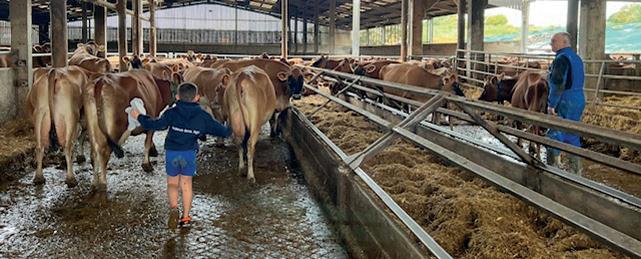
It would be fair to say that I have now given up reading or listening to weather forecasts. If I look in the sky and see a yellow image it’s an added bonus; if I look like I’ve just been in the shower with my clothes on I know I probably left the house in a hurry without my coat. Note to selfkeep a coat in the car at all times. I seem to have been caught out this year far more times that I care to mention.
Over the years life evolves and so does farming. Our lives seem to move at a rate of knots that I cannot comprehend at times. Thank goodness for mobile phones/Facetime etc.
Agriculture contributes approximately £120 billion to the British economy. British farming plays a huge role in the food supply chain locally. The size of the contribution does not, however, exempt farming from crisis.
In the UK, only 5.4% of the total land area is used for farming crops, while the number of employees in farming has dropped significantly over the past 10 years. That number has dropped by more than 553,000 since Feb 2020, while the number of selfemployed farmers has dropped below 100,000 this year.
Some may say that with all the financial constraints, this is to be expected, but it’s also important to note that the average age of a farmer is 59. With far fewer young farmers entering family farms, it brings into question food security for the future. Farming

ANITA HICKSON Farmer
bungalows is more profitable than farming itself, it would appear.
We feel fortunate that both the boys have an avid interest in the farm and have continued their education in farming, but are we condemning them to a life of 365-day drudgery with no respite? Would it be easier to enter another profession with paid annual leave, sickness pay, large pension contributions, etc?
The idea is tempting, but farming is a way of life that not many (other than farming folk) seem to understand; it’s a hard life but also a rewarding life.
Behind every plate of food is the work of a dozen or so farmers. Even in a simple dish of pasta in a tomato sauce, farmers grow the wheat for the pasta, the tomatoes, the basil and garlic to make the sauce. If you add sausages, you’ll make a pig farmer happy.
Much of the food we eat is the result of hard graft by many farmers, growers and workers, but most of today’s youth think we just buy it off the shelves without worrying about how or when it was produced. Although farming is definitely a minority interest (especially with our new government) we need to make our voices heard.
Enough whinging, as back on the farm winter has arrived and the clocks have gone back. Days are getting shorter but that only means one thing – Christmas is on its way and so will spring be.
Walter the bunny paid us a visit from school for the weekend to show the class the activities Teddy got up to, pictures were duly taken and the bunny had a wash before returning to school. I must confess to feeling exhausted looking at the photos.
Until next time, stay safe.




More by accident than judgment, harvest 2024 produced a respectable result. The wheat I managed to drill in October last year was on dry land so it survived the Biblical (or should that be ‘climate-change induced’?) quantities of rain that occurred immediately after sowing.
Such was the deluge that I was prevented from drilling on my heavier land and ended up with a min-till sown spring bean crop that performed well, thanks to the regular rains we enjoyed throughout the summer. With last year’s harvest safely in the barn, and this year’s autumn sowing programme now completed under ideal conditions, I should be feeling upbeat about the farm’s arable enterprise.
But, as any grower knows, ‘upbeat’ is not the word. Arable commodity prices, despite a minor post-harvest rally, remain alarming. The best bid I’ve received for my feed wheat is £179 per tonne, alongside £206 per tonne for my beans. Set against the input costs that arable farmers face, and the quickening disappearance of Basic Payments (BPS), these prices are catastrophic.
As it happens, 2024 is the 30-year anniversary of the biggest risk I ever took in my farming career when I bought a block of 160 hectares of poor-quality arable downland. This land was so steep that the John Deere Hillsider combine that I bought especially to harvest it used to sound its warning siren that I was exceeding the ‘tilt safety limit’. The previous farmer had made a much better living harvesting flints from it.
But although that was 30 years ago, the economics of arable farming in 1994 remain clearly etched in my memory. Grain prices were £110 per tonne, bulk urea fertiliser cost £80 per tonne, red diesel 5p per litre and a good, second-hand 125hp tractor was £12,000. Its driver’s annual salary was a princely £13,000.
You don’t have to be a brilliant agricultural economist to understand how poorly current arable farming profit margins compare to those halcyon days. While the price of grain has risen barely 50% over the past three decades, the cost of inputs has more than trebled over the same period.
So what will arable farmers do? Reports are that many of them are entering large quantities of land into Sustainable Farming Incentive tiers that involve breaks in production like the planting of legumes. This seems like a sensible option on poorer land, but it is unlikely to plug the gap left by the disappearance of the BPS or help with the daunting costs we now face, much of them driven by the current cost of energy. For comfort, I keep looking at my grain stores bursting with old crop. But, try as I might, I can’t suppress the feeling that my arable enterprise currently faces more financial challenges that it has done at any time since 1994.


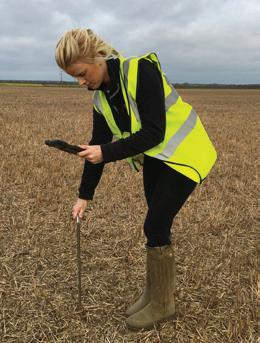


• Ultimate Soil Scanning – High definition in-field scanning of major field properties including pH, Organic Matter, Electrical Conductivity and Topography
• Precision Soil Sampling and Mapping using our Wintex automatic sampler to accurately and efficiently collect soil from various depths – perfect for measuring soil mineral nitrogen and soil carbon.
• Biomass Imagery
• Standard Soil Sampling – P, K, Mg and pH
• Potato/Pea Cyst Nematode Analysis (PCN)
• Lime supply and variable rate application
• All soil results available and stored through our interactive online portal, Soil Smart.

01233 740247 enquiries@farmimage.co.uk www.farmimage.co.uk

It’s been another tremendous month of livestock returns for producers supporting the live weight system in Colchester, with cattle seen to record levels and plenty of cattle over 320p/kg throughout the period and trading up to £2,350 a head in the finish ring. More cattle are desperately needed to maintain buyers’ interest in the markets.
General commercial cattle are also extremely dear, with numbers short, and many more could again be sold to an advantage.
The processing beef trade ensured that the over 30-month cull cow trade remained strong throughout the period. This is the one section where Farm Assurance does make a difference in the cattle trade.
Store cattle, as would be expected with the finished cattle trade, are extremely dear. Again, numbers are short, with farmers looking to replace the stock in yards.
The sheep trade is also at exceptionally good levels, well above 12 months ago in Colchester, with numbers generally inadequate. Many








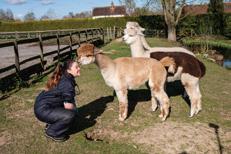



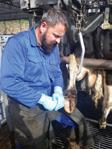





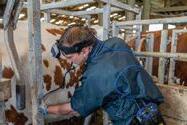












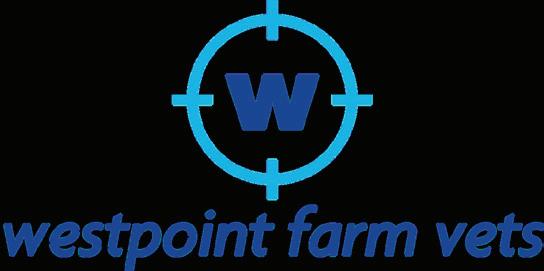
producers have been complaining about the difficulty of finishing sheep this year, and hard feed is required and beneficial. Plenty of lambs have been seen at between £150 and £180 a head throughout the season, with weight no issue. Just £10 of food would add over £20 to the value; this surely must be a good return. More lambs could certainly be sold but, as always, meat and conformation are important.
The store sheep trade has been somewhat difficult at times, with the bluetongue areas affecting demand, but still looking realistically sold. Best strong lambs are selling at around £100 per head, with smaller lambs anywhere between £50 and £80 a head depending on breed.
The cull ewe trade continued to be strong until the end of the period, but a decline in the quality of the ewes forward was also noted. This is typical of the time of year, and more could still be sold.
The pig trade continues at stand-on levels with demand seen for the best pigs, and more again could be offered. Although we do not sell live pigs in Colchester, we do have outlets looking for pigs and are happy to talk to producers. The trade is certainly strong enough to ensure a profit is produced at the present time, taking into consideration that the cost of feed is lower.
The wet weather is causing some concerns in the arable cropping in the area, with some farmers getting behind with maize silage operations together with drilling winter wheat. Let us hope we are not looking at a repeat of the 2023/2024 winter.
We are nearing the festive season. Livestock markets were advertising the prime stock shows to be held in early December; the year seems to draw on very fast. Allied teams: vet tech services, foot trimmers, consultants, and front line, dedicated farm animal veterinary surgeons Catering to all livestock needs: commercial, smallholdings and companion farm animals Meeting the needs of our clients with tailored services, health planning, preventative medicine and emergency care 24/7 Efficient Sustainable Productive: Our

PETER KINGWILL
T: 01233 502222
www.hobbsparker.co.uk

If we are not busy at this time of the year then there is clearly a problem, but this year the antics of bluetongue, the appalling weather that has set winter 2024/25 off on an early start and the macro level issues surrounding environmental farming are causing more than its fair share of head scratching for us all.
In contrast to last year’s bluetongue restrictions in East Kent that hit a small sector very hard, Autumn 2024 has developed into a much larger restricted zone that spreads from Yorkshire down to Hampshire, with everything to the east of that line finding themselves with a big enough trading zone and sufficient licences and approved abattoirs to move outside if necessary. That is not to belittle the difficulties to farmer, markets, abattoirs and hauliers that sit close to the border and for which normal routines have been disrupted.
We have been pleased to welcome quite a number of new faces to Ashford, those who have been unable to venture a short distance west to their normal outlet and consequently have had to make a longer journey further east.
Trade has been good this autumn, which has softened the blow, but we hope for their sakes that their return to their markets is not held up for too long. The large size of the zone has made all the difference, with buyers and sellers for cattle and sheep recognising the flexibility of the livestock auction system to serve their interests well in challenging times.
A more dramatic intervention this autumn has been the rainfall, which has seriously impacted all farming, with crops still not harvested, next year’s crops not sown and livestock having to come in a month early.
The South East of England received 249% of its long term average rainfall in September, with Stokenchurch having 93.2 mm on one day alone. Many areas have seen soil moisture deficits wiped out by the end of September, heralding a long winter period, and the rain hasn’t stopped!
This rainfall has meant more stock needing to be moved into sheds or offered

for sale, and in recent weeks we have been full in the cattle pens, with close to 500 store cattle weekly along with strong numbers of finished and cull stock.
Clearly, many farmers and their advisors have got to grips with the Sustainable Farming Incentives now offered, but with the additional ‘rocks’ of bluetongue and continuous rain being thrown into the agricultural pond, I feel more people than ever are being driven towards the guarantees of support, and the area of production is taking a backwards step.
This is worrying for all of us involved in the production chain of agriculture, and it should be worrying for both consumers and politicians alike as there are already clear signs, in the livestock world at least, that production is falling sharply due to both economic and age factors in farming families.
Lost skills are not easily replaced and lost livestock buildings don’t sit empty; they are tomorrow’s lock up units, warehouses or residential conversions. This is another debate that must be had – and soon. Time moves on, and we will lose our control over our food production far too quickly.
The best way of experiencing the current high level of trade is to go to market, of course, and see for yourself, but that is not always possible. Please take advantage of our reports, catalogues and comments on social media and contact auctioneers for their up-to-date view on proceedings, but in
the meantime, here are a few headlines.
Finished cattle are on fire, with plenty of the best over 300p/kg, with A J Thompson & Sons, Romney Marsh, selling their homebred Limousin cross heifers to a new record of 331p/kg early in October, their steers grossing to £2,034 (eight averaging £1,922).
Cull cows remain tight in numbers, with weaning and scanning yet to come but returns outstanding, with feeding Simmental cross cows for M & C Farms, Rye to 279p/kg (£1,490), while the strong black and whites from the dairy have topped at 185p/kg (£1,615) from J S & M D Antrum & Son, Rolvenden.
It is store cattle sale time and full pens tell their own story. It’s difficult to pick headlines, but quality Sussex steers 19 months from Masters Farm, Seaford at £1,635 were a real picture, while Limousin cross steers 16 months £1,780 from F S Husk, Dover, Angus x Friesian steers 24 months from P J Mannington, Hurst Green at £1,495 and pure Hereford steers 19 months £1,480 from M J Burton, Reigate, all tell a story about the level of trade currently.
There is nothing wrong with the sheep trade fat or store, with 375 Texel cross stores from S J M Evans, Staplehurst, selling to £119, averaging over £100 a head, while the best of the finished are over £150, regularly topping at £171, from Wanstall Farms, Brenchley.
Keep close to your market, seek advice if needed and keep an eye on the future.
Sophie Cranfield at Horsham looks at getting the best out of your buildings.
In an ideal world we would all have brand new, purpose-built buildings for calf rearing, but often this is not financially viable, or at least not in the short term.
There are, though, many ways to adapt your current buildings to improve conditions for calves and reduce disease risk. Ultimately, investment in calf housing will in turn reduce production losses from mortality and reduced growth rates while increasing welfare. Below are a few of the key factors that can be focussed on to improve existing calf housing.
Preventing humidity is key to reducing risk of respiratory disease, and so ventilation is one of the most important factors in calf housing design. Good ventilation reduces moisture in the air, allows the bedding to dry out, prevents animals from overheating and reduces pathogens in the air.
The ‘stack effect’ comes into play when calves are around six months old and their rumens have developed. The heat produced by the calves from rumination warms the air and it rises; when it escapes through an outlet in the roof, this then draws fresh air in from the inlet. Young calves do not generate enough heat to initiate the stack effect, and in buildings with large air spaces the air may not heat up enough to rise even with older calves.
If you are relying on natural wind flow into the building, it would be prudent to monitor this in varying weather conditions to ensure that the air flow is adequate even on still days. The Agriculture and Horticulture Development Board (AHDB) recommends a minimum inlet of 0.08 m² per calf, with an even spread of inlets around the building to prevent areas of stagnant air. If your buildings are sheltered on all sides, or attached to other buildings that minimise airflow, positive pressure ventilation in the form of fans and ducts can be used to increase airflow.
Ventilation requires an outlet at the top of the building. In a pitched roof this can
be achieved by removing the ridge tiles or adapting them into an open protected ridge. Flat-roofed and low-pitched buildings are not recommended for calf housing. If this is all that is available, talk to your vet about possible adaptations specific to your set up.
At the same time as good ventilation, it is important to avoid draughts at calf level. This can be achieved by the lower half of the walls and partitions being solid and ideally an easily cleaned surface. Solid partitions also prevent nose-to-nose contact, so there should not be any gaps that would allow a draft or the nose of a curious calf through.
In a shady, moist environment, cryptosporidium oocysts can survive for months and coccidia oocysts can survive for over a year, so if sheds are empty over the summer they should be mucked out promptly to allow maximum drying time. If batches of calves are moving through the same pens/sheds, disinfection is highly important between groups.
Feeding troughs should be cleaned and disinfected regularly and ideally hung off the ground to reduce the risk of ingestion of faeces from contaminated troughs.
Deep, clean bedding has a number of benefits, reducing the number of pathogens present on the bed that the calves are in contact with and allowing calves enough depth to keep warm in colder temperatures.
Stocking density has a large impact on the ability to keep a shed clean; highly stocked sheds will get dirty and damp quickly, increase chances of respiratory disease and introduce competition for feed space. Guidelines for stocking densities depend on the size of the calves, starting at a minimum of 1.5m2
Inadequate drainage will increase moisture in the bed and therefore humidity in the airspace. Floors should have a minimum 5% slope to drain properly. In group housing, outdoor ‘loafing space’ and
a feed passageway can reduce the amount of faeces and urine deposited onto the bed and can be scraped regularly, removing contamination and moisture.
Calves coming from market will likely have been exposed to various diseases, which during a stress period makes infection more likely. Allowing enough time for the animal to stop shedding is vital to prevent infection spreading into the herd. We recommend at least four weeks. During this time there should be no nose-to-nose contact with any other stock and ideally the isolation pen should be in a separate airspace.
These are only a few of the factors to consider when improving calf housing. Under the animal health and welfare pathway, farmers qualify for a funded vet visit to review health and welfare priorities on individual farms. This visit includes bovine viral diarrhea testing and presents an excellent opportunity to assess buildings.
Buildings can be assessed using smoke bombs and humidity monitors and measured to calculate appropriate stocking densities, feed space requirements and what adaptations may be appropriate. If you are in the position to build new calf sheds, AHDB have online resources to assist with planning the building in terms of layout and location in addition to the factors discussed above.
By the time this goes to press, the tups will either be in or will already have fulfilled their annual function; generally, bolstered in part by a decent autumn flush of grass this season, the ewes have been in fairly good condition joining the ram.
The autumn has so far been mild, though quite wet – very wet for some – although, for us at least, ground conditions have remained fairly firm, which has made getting around and moving stock into place somewhat easier that it might have been. The mild weather has produced a bit of late fly strike which has caught out some, but I suspect it is another insectborne problem that has given much greater concern – the threat posed by BTV3; this current reincarnation of bluetongue and the uncertainty as to how the disease will, or will not, progress. The consequential imposition of restricted zones across much of the South East corner of the country has already generated significant problems, with a substantial and negative impact on the autumn sheep trade.
Last autumn's incursion of BTV3 into the South East was dismissed by some as a bit of media hype. It’s true no active cases were identified – all were discovered via antibodies picked up on routine surveillance – but that said, the presence of antibodies does indicate that there had at some time been some BTV3 infections that had either not been observed or simply not reported; both give some justifiable cause for concern.
Considering the devastation that the disease has generated by rapid spread through northern Germany, Belgium and the north of France this year, we have been fortunate; but it is early days. Hopefully as we progress into winter, midge activity will subside and the risk will diminish, but checking stock is still imperative.
We know that BTV3 has been circulating this season, with several active cases reported in the region, but just how widely we really don’t know. It does not appear to be widespread, but the bigger picture is unclear, a situation not helped by the dearth of information issued by the Animal and Plant Health Agency (APHA), which seems to have been largely limited to details regarding the extent of temporary control and restricted zones (RZ). The lack of meaningful information has been a matter of concern for producers.
Where cases have been reported, there has been little detail; knowing whether a case
has been identified via routine surveillance or as an active case will have a significant impact on how producers react and respond, as would some details of location. Knowing that there is an active case just down the road adds a sense of urgency that is absent when the only information provided is that a case, which may or may not be active, has been identified in, say, Kent.
There also seems to be some confusion over movement restrictions on premises outside any RZ. Some have been completely locked down, unable to move sheep in or out at what is a critical time of the year, with no indication as to when restrictions will be lifted, simply as a result of antibodies (not infection) being picked up on routine surveillance from a single sheep moved in from an area which has subsequently become an RZ.
The converse of this has been a few producers that have had active cases positively identified but no order to cull given, so no compensation, thus leaving owners to decide either to maintain treatment, knowing that there is a viraemic animal on the premises, or to cull with no compensation. This is totally unacceptable penny pinching on the part of the authorities, particularly when one considers that DEFRA accumulated a £358 million underspend over the past three years.
We do have some reassurance offered by way of vaccinations. Three types, not yet authorised due to lack of UK testing (another Brexit benefit?) have been granted (temporary) licences should we choose to use them. None offers 100% control, none will stop infection, but indications are that they will (one seemingly better than others) significantly reduce the severity of symptoms and levels of mortality. They are, at close to £4 a dose, not cheap, but the cost of losing, say, one good ewe could, including disposal, exceed £200. Whether or not producers vaccinate depends
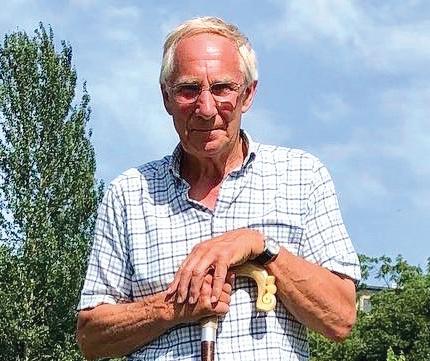
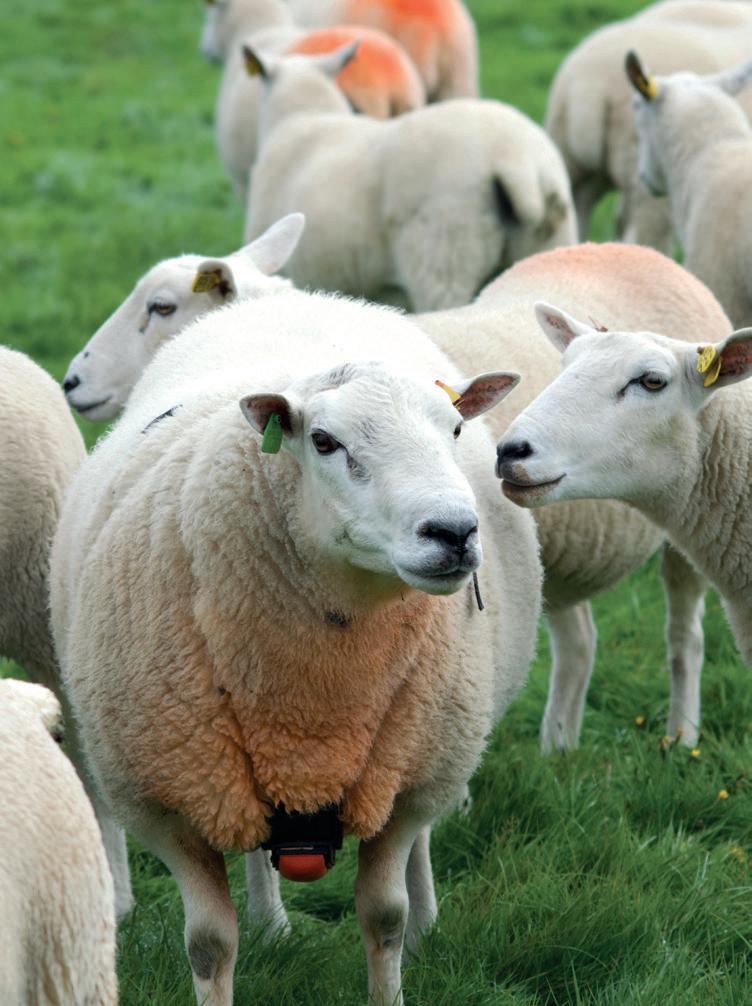
on individual attitudes to risk; winter is approaching, and a cold spell will dramatically reduce or possibly stop midge activity, and without midges there is no transmission. Conversely, if we have yet another mild and open winter some level of midge activity may persist throughout, as happened last winter; remember Schmallenberg and the impact on some producers in the region.
Personally, we have decided to vaccinate, one of the main considerations being welfare. We hope BTV3 does not become an issue, but if the worse should arise, anything that helps reduce symptoms will provide a welfare benefit, plus of course reducing mortality.
After the initial desire to rush in and vaccinate everything, we have decided, rightly or wrongly, on a rather more considered approach. All youngstock will be vaccinated now, but the ewes and tups will wait until after tupping and implantation in order to secure pregnancies. This is based on some concern as to the possible negative impact the vaccine and possible contraindications may have on fertility, which may persist for six weeks or so, particularly in the rams. In addition, it seems logical to delay vaccinating the breeding flock until December or early January, which should deliver maximum protection in the spring.
This academic year sees the largest ever number of students enrolled onto our agricultural courses at Plumpton, which is testimony to the support and development we offer them while they are at college and the success and progression opportunities they graduate with.
Our students are rewarded for their effort and determination, outstanding achievement and contribution to the college or wider community by developing exceptional employability skills as they progress into work.
Several students stand out every year because they go above and beyond what is expected at college. Our higher-level students complete over 150 hours of work experience each year with excellent feedback from local employers, which supports the evidence of their passion for making sure
they have the opportunity to impact the agricultural industry positively.
Below, Charlie, George and Max, who are in their first year of studying level 3 agriculture, share their experiences and journey so far. These three have supported key recruitment events and career days for current and prospective students since starting in September.
“Since moving to Plumpton, I have had many lovely experiences. I live on campus in the student accommodation. It has been the best thing I have done, stepping out of my comfort zone and making many new friends.
“The student services team at Plumpton creates a friendly and supportive community; they become an extension of your friendship

group. Living on campus has made my college experience a whole lot better. It has meant I am always on time for my lessons and has opened up many opportunities I wouldn't have had if I was travelling to college by bus.”
“Joining Plumpton has been an unforgettable experience. This first month has already taught me many skills. It provides me with many opportunities as the year goes on and into the next academic years.
“My favourite opportunity so far has been routines. Routines are completed through the college farm, covering intensive and extensive farming systems in dairy, sheep, pig and general farm worker routines. It's an excellent opportunity for students starting in agriculture with little experience, and builds confidence. The staff are there to support you through these routines. I have already completed my general farm worker routine, where I learned how to plough and harvest maize.”
“Studying at Plumpton has opened many new doors and opportunities for me. As a first-generation farmer, I found my own foot in farming, working in this industry for a few years before coming to Plumpton.
“At the college, we have practical lessons to advance our skills. For me, this has been very beneficial as I can extend my own knowledge and ability in areas I have not worked in yet, such as livestock. Plumpton is a brilliant way to gain experience as they offer so much on their vast curriculum that covers exactly what you need to know and equips you with all the skills you need for a life and job in farming. I feel confident that I will be ready to tackle most jobs after studying at Plumpton.”

For every extra hour that a dairy cow is lying down and chewing her cud, she will produce an extra litre of milk. So how can you measure that your cows are lying down and ruminating as much as they can?
At Cliffe Farm Vets, we recently hosted CowSignals training to understand better how small changes to a housing system can maximise cow welfare, and hence their output. There were lots of fun facts that we picked up; for example, cows only need to sleep for 20 minutes a day. They are grass-munching maniacs.
The main staples that cows need in order to live well are feed and water, space and rest as well as light and fresh, flowing air. How could we better provide these as our buildings stay the same and our dairy cows have got bigger?
For example, rub marks on necks all in the same place could signal a need to look at the feed face. Is the bar too low, or are the cows stretching to reach the food? Cows can only efficiently convert feed if they can eat it. Maybe the feed needs to be presented in a trough or pushed up more frequently. Making sure the cows have continuous access to a ration is the best way to improve feed intake.
The great thing about making assessments like this is that it does not need lots of equipment or expensive testing. By recording objective observations and looking at how the cows are behaving, you can get useful information immediately.
One of the best tips I learned was to look out for shiny metal. This shows where exactly the cows frequently contact the infrastructure and what could potentially be causing injury. This is a sign to make an alteration, such as changing to a plastic bar or adding rubber. Looking at how bedding and walkways can be improved will reduce standing times and lead to reduced risk of lameness and more milk.
Next time you are walking around your shed, have a look at the cows with a fresh pair of eyes. Maybe you will spot something new!







Crystalyx Easy Breather is a natural aid to help maintain good respiratory health this winter. Suitable for calves, young cattle and sheep, Crystalyx Easy Breather includes clearing menthol and relaxing eucalyptus. With a full complement of vitamins, minerals and trace elements, the Crystalyx mode of action helps promote feed intake after a stress or challenge.
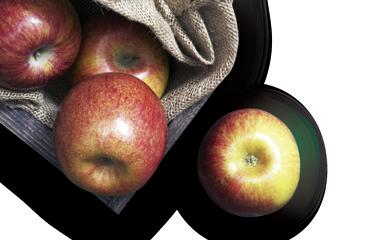
Call us today or visit our website: 01227 763939 furleypage.co.uk
Many vineyards and other landowners have parcels of land which, for a whole variety of reasons, are unsuitable for planting vines or crops.
With the Government’s welcome focus on increasing biodiversity, there is now a number of schemes providing opportunities to potentially profit from that otherwise unusable land.
The main way to turn a profit out of unusable land is through biodiversity net gain (BNG).
There were major changes to the scheme in February which mean developers are now required to ensure there is at least 10 per cent more biodiversity at a development site when the development is completed than there was before they began building.
Frequently this will mean maximising the amount of development on the site and offsetting the lost biodiversity with a ten per cent increase on a completely different site. The rules require the developer to pay for the alternative site to reach the required biodiversity standard and then pay to maintain it for a minimum of 30 years. This results in a lot of rent cheques for otherwise unusable land.
As vineyards across the South East look to build on their wine tourism ventures, choosing the right type of wildlife habitat will only boost their appeal to visitors.
Under planning rules for every new development, the predicted increase in
By James O’Connell, Head of Vineyards and Wineries team, Mayo Wynne Baxter.
total water demand in the region due to the development should be offset by reducing demand in the existing community.
This led to one client, a dairy farmer, having a whole new water catchment system put in place on the farm, paid for entirely by a developer, together with an obligation on the developer to pay to maintain it for around 25 years.
The farm has become self-sufficient in water, which offset the increased water demand from the developer’s new housing estate.
This scheme provides financial incentives for vineyard owners to look after and improve the environment.
One of my clients has a herd of Exmoor ponies that grazes scrubland in Sussex. The selective nature of the ponies’ grazing returns unusable scrubland, including quite steep escarpments, to its original chalk grassland state, allowing the return of native flowers and other plants and attracting grant payments on otherwise unusable land.

Natural England has so far advised 74 local planning authorities that new developments should only go ahead in their areas if they do not cause additional nutrient pollution; new residential development must achieve ‘nutrient neutrality’.
Off-site offsetting is allowed, although the complexities of achieving nutrient neutrality make this a more complex scheme to engage with than most.
This type of scheme comes under the broader Environmental Land Management schemes. It provides funding and support for projects to protect and restore the English landscape.
This scheme provides funding and support for projects to create new habitats for wildlife, help protected sites and boost efforts to reach net zero, alongside sustainable food production.
Finally, this new drive encourages farmers and landowners across England to plant and manage more trees.
It’s true to say that managing a vineyard is like riding a rollercoaster: the highs are high, but the lows can be very low. While pursuing the goal of a profitable vineyard, or indeed growing other crops, it makes sense to use otherwise ‘wasted’ land to develop alternative income streams that are less dependent on the weather and on consumers’ thirst.
The new Labour Government’s green energy initiatives present both potential benefits and hurdles for the agricultural sector. In navigating these changes, obtaining legal advice will be crucial for farmers to protect their interests and make informed decisions.
Labour plans to make Britain a “clean energy superpower” by increasing green energy investments, tackling climate change and hastening the transition to a low carbon economy.
Key elements of Labour’s plans include:
• Championing British food: Labour stated that they would set a target for half of all food purchased across the public sector to be locally produced or certified to higher environmental standards. This could benefit South East farmers because the push for locally sourced food in the public sector could increase demand for locally produced agricultural products.
• Improved land use framework and Land Management Schemes: The manifesto states that Labour will introduce a land use framework and make environment land management schemes work for farmers and nature. This, in turn, could provide financial incentives for sustainable farming practices. We eagerly await further information from the new Government on the details of these changes.
• Clean power initiatives: Labour stated in its manifesto that it aimed to double onshore wind, triple solar power and quadruple offshore wind by 2030. They also plan to establish a publicly owned energy company called Great British Energy which would invest in renewable energy projects. Such initiatives will increase opportunities for farmers to lease land for use for wind turbines or solar farms or to generate their own renewable energy.
Labour’s plans for increasing the proportion of British-produced food purchased by the public sector should increase opportunities for local farmers to sell their products to schools, hospitals and other public sector entities.
When considering the possibility of making land available for energy projects, or any other form of alternative land use, farmers must carefully assess the terms of any associated land lease agreements, as well as any partnerships terms, with the relevant energy company. The associated agreements can be complex, but through careful planning and negotiation farmers can ensure they
receive appropriate compensation in exchange for their rights, as well as retaining sufficient control over how their land is to be used. This can include understanding potential long-term obligations or exit clauses, which are critical in protecting farmers from unforeseen risks.
Furthermore, disputes may arise over land use or energy projects, whether related to environmental concerns, land ownership or contractual disagreements. In these cases, having a solid legal framework in place can help avoid lengthy and expensive litigation, ensuring that disputes are resolved efficiently. Should formal dispute be unavoidable, of course, your legal representative can also support you through those proceedings.
Legal advice will play a key role in ensuring that farmers are well positioned to take advantage of renewable energy opportunities while safeguarding their rights and interests. With the right support, farmers can play a pivotal role in the country’s transition to becoming a “clean energy superpower”. If you have any specific concerns or need more detailed information, a commercial lawyer can provide the guidance you need to thrive in this evolving landscape.
Commercial Partner, Brachers LLP
T: 01622 776442

“Brachers has the personal touch, listening carefully to clients’ needs in a friendly, sensitive and helpful manner.”
Proud to be recognised for our agricultural expertise in leading directories, Chambers and Partners and The Legal 500
Maidstone | Canterbury w ww.brachers.co.uk

BTF Partnership is offering for sale a private and versatile property in the historic Alkham Valley with established vineyard, holiday cottages, ancient woodland and further potential for business development with a guide price of £3,300,000.
Chalksole Manor consists of a 7,610ft2 fully restored and modernised main residence with six bedrooms originally built in the Arts and Crafts style in 1920 with a modern leisure and party suite including indoor pool and a one-bedroom, self-contained 670ft2 annexe. In the grounds of the house is a range of modern outbuildings including a four-bay garage, workshop, tool store, summer house and large greenhouse.
Some distance from the house and accessed separately from either the road or through the land is The Old Stables, a one-bedroom cottage which adjoins the two-bedroom Groom’s Cottage, both currently used as holiday lets creating an additional income source.
To the east of the main house and accessed via a separate entrance on the road or through the land is the Chalksole Manor Vineyard. The vineyard was planted in 2007 and comprises 9,000 vines of Chardonnay, Pinot Noir and
Pinot Meunier for the production of English sparkling wine. With an average yield of eight tons per year, the current owners sell the grapes to wine-makers directly.
There is scope as a new business opportunity for own-wine production and with the current planting it is estimated this could generate an average of 7-8,000 bottles per year. The vineyard could be expanded further with the acquisition of additional land and a 3,600ft2 new agricultural barn from the vendors that are currently not part of this sale.
Gardens, land and woodland extends to 27.44 acres in total and there is also scope for those with equestrian interests with flat paddocks areas to the south. The local riding trails across the North Kent Downs are some of the best in the county, with far reaching views across the local countryside.
The original Arts and Crafts house was built around 1920 for Sir Thomas Henry Devereux Berridge, KBE (1857-1924), a former Liberal MP for Coventry and Leamington. Berridge was knighted in 1912 and made a KBE in 1920 for his war work, in particular for his chairmanship of the executive committee of the Royal Flying Corps.
The house was later owned by a London photographer who left it to his housekeeper, but it fell into significant disrepair before it was bought from probate by the current owners in 2002.
The current owners have significantly invested in the house during the initial renovation and over the years, and upgraded technology for modern living and to allow easy working from home with a sizeable office suite with Cat 5 cabling throughout and Crestron and Lutron control systems.
Alex Cornwallis at BTF Partnership commented: “This is the perfect house for someone looking for a private, rural and accessible country property with additional income streams and vineyard which can be run as a hobby or developed for those with more commercial aspirations. The existing holiday lets already generate a useful additional income stream, with the potential for further development. For many people it would take them years to find and build a similar property with such potential for further growth and it will be of interest to those looking to avoid this and the challenges of getting the vineyard to its already productive stage.”




Two adjoining mixed Wealden farms covering 378 acres have come to the market through Savills.
Greenhurst and Foxhole Farms are located about four miles outside Uckfield, East Sussex. During the mid-16th century, Greenhurst Farm was an important
agricultural and labour resource supporting the growing demands of the iron industry.
Sitting on the edge of the High Weald National Landscape, the farms include two primary farmhouses, Greenhurst Farmhouse, a six-bedroom traditional Sussex tile-hung house with period features, including exposed beams, oak panelling and open fireplaces, and Foxhole Farmhouse, an idyllic, recently refurbished four-bedroom house. There is also a four-bedroom cottage and a range of other modern and traditional farm buildings, including some with planning permission for four holiday lets.
The farmland covers almost 368 acres, including arable farmland, pasture and woodland.
Chris Spofforth, of Savills rural agency team in the South East,
said: “Having been in the ownership of the same family for three generations, the sale of Greenhurst and Foxhole Farms presents a rare opportunity for an incoming buyer in a beautiful, yet accessible, part of East Sussex.”
Greenhurst and Foxhole Farms is available as a whole, with a guide price of £7,000,000, or in ten lots.




A substantial farmyard comprising in excess of 83,000 sq ft/7,710 sq m of modern and traditional farm buildings, on land extending to 5.42 acres (2.19 hectares), has come to the market with Lambert & Foster.
There is also an attractive three-bedroom detached period farmhouse and grade 1 & 2 farmland extending to 73.17 acres (29.61 hectares) available by separate negotiation.
Coldharbour Farm is located in the parish of Old Romney, on the Romney Marsh. The farm is an extensive range of modern and traditional farm buildings set around a mainly concreted yard with buildings and hard standings over about 70% of the site. The buildings have been used for storage and processing of potato and other vegetable and fodder crops. It formed the operational hub for John Paine Farms that farmed a significant area of adjoining freehold and tenanted land.
• A substantial 20 bay concrete shed. The building incorporates a two-storey shed
and a separate two-storey plant room
• Attached to the packhouse are three separate cold stores. Two of the chambers provide approximately 1,040 tons of storage, with the third chamber offering approximately 500 tons of storage.
• Potato cold store
• A 10-bay grain store with concrete sectional grain walls and two roller shutter doors
• An eight-bay building originally constructed as a potato chitting shed but now converted to grain storage
• 10 bay hay barns
• Two identical concrete portal frame buildings
• Four bay store
• General store
• Workshop
• Farm office with two separate office areas
• The sprout store is sub-divided internally with the western end having loft storage above and an old cold storage unit.
• A former stable of timber frame construction with loft above.
• Tool shed
• Timber barn and attached lean-to.
• A two-storey building with ground floor storage with first floor above, with the remainder of the ground floor converted to provide kitchen mess room and toilet block for seasonal workers.
Coldharbour farmhouse and land is available by separate negotiation. The three-bedroom house was substantially refurbished in 2021. The land to the north comprises two adjoining fields laid to pasture, extending to 42.3 acres/17.11 hectares and includes a concrete bin loading pad and a shepherd's hut. To the east of the farmhouse is a level grass field extending to some 7.49 acres/3.03 hectares. Further east is a parcel of arable farmland extending to some 23.38 acres/9.46 hectares. The land is classified as grade 1 and 2 on the DEFRA agricultural land classification and has underlying geologies of Hastings bedrock (sandstone, siltstone and mudstone). Soilscape identifies it as loamy and clayey soils with coastal flats and naturally high ground water.

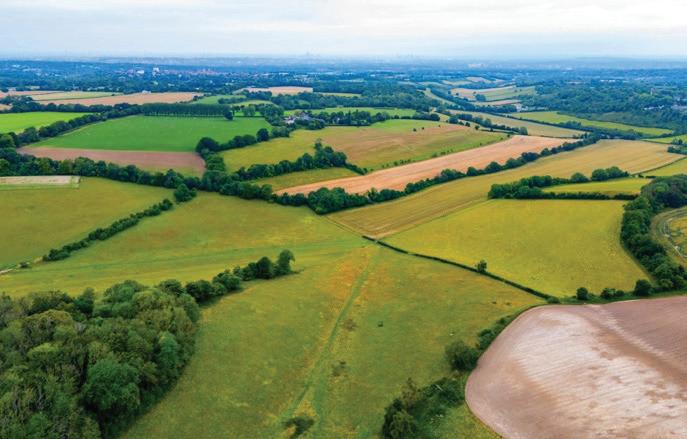
SALE



Whelan Estate, Biggin Hill, Kent Guide Price £18,900,000
Rare opportunity to acquire a productive diversified estate with extensive acreage amounting to 1356 acres located within the M25. Whelan Estate lies to the west of Biggin Hill, within easy reach of London and the whole of the south.
Tunbridge Wells Office - 01892 509280



Westridge Place, Bolney, West Sussex Guide Price £4,100,000
Farm in an accessible rural location with high-specification farmhouse, secondary accommodation, attractive land and extensive outbuildings totalling over 18,000 sq ft. 22 acres. Additional land available by negotiation.
Haywards Heath Office - 01444 453181
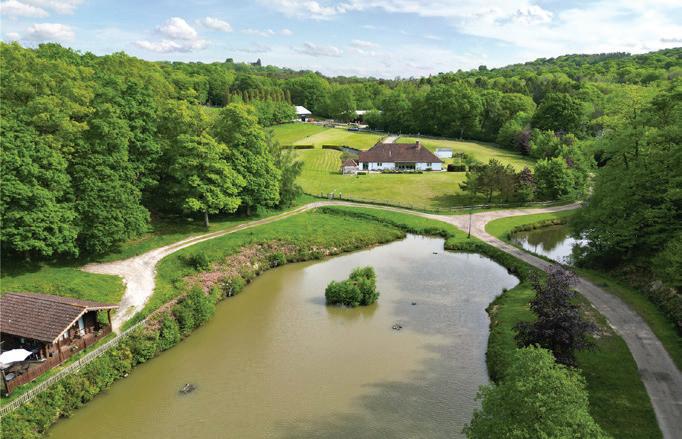


Clayhill Farm, Lamberhurst, Kent Guide Price £3,000,000
Attractive grassland farm approximately 138 acres with areas of woodland. Situated in a secluded rural location with its own lake. Outbuildings include a detached annexe, fishing lodge and three farm buildings.
Tunbridge Wells Office - 01892 512020



Birchen Knoll Farm, Fairlight, East Sussex Guide Price £10,340,000
Expansive arable and grass farm with a farmhouse and annexe. Range of farm buildings and fishing lakes. Located within the High Weald Natural Landscape with views to the coast. Approximately 954 acres.
Tunbridge Wells Office - 01892 509280
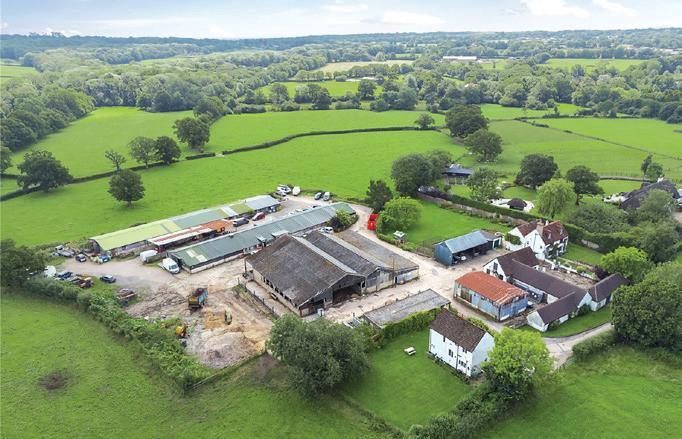


Sturtwood Farm, Newdigate, Surrey Guide Price £4,000,000
Grade II Listed family home and seperate three bedroom cottage. With commercial units and pasture farm in a rural location east of the village of Newdigate. Further 3 bedroom cottage available by negotiation. Approximately 100 acres.
Pulborough Office - 01798 872081



Bathurst Farm, Rushlake Green, East Sussex Guide Price £2,000,000 - £2,200,000
Small farm of about 46 acres, comprising a Grade II Listed period farmhouse, extensive range of modern farm buildings with potential for a variety of uses, pasture land, woodland and three ponds. Rural edge of village location.
Battle Office - 01424 775577



A rare opportunity to acquire a productive diversified estate with extensive acreage located within the M25 to the west of Biggin Hill has come to the market with Batcheller Monkhouse.
The Whelan Estate is a productive diversified estate, extending to approximately 1,356 acres (549 hectares), with three farm yards and let residential and commercial properties.
The estate has been in the family for two generations and has been operated as a mixed farming enterprise throughout. In recent years the farming enterprise has moved to a more regenerative approach and has implemented new stewardship schemes.
The arable and grassland is currently farmed in-hand utilising a contract farming agreement. The contractor has indicated they would be interested in continuing if required.
The arable land extends to approximately 700 acres (283 hectares) and is predominantly grade 3. The soils are well suited to combinable crop rotations. The land has been farmed under a regenerative system. The farming enterprise has implemented grass leys and cover crops to integrate livestock back into the arable rotation.
The grassland extends to approximately 487 acres (197 hectares) and is predominantly grade 3 with some grade 4. Grassland is grazed by farmers on annual grazing licences.
In 2023, 10,000 metres of new fencing
was erected and an additional 10,000 metres will be completed in 2024. This new fencing provides graziers with the ability to rotate grazing across the estate with well sized fields. The majority of the grassland is under a mid-tier and higher-tier stewardship, with options such as GS2, GS6 and GS13.
The estate includes several blocks of mixed woodland, totalling 169 acres (68 hectares). The woodland has significant sporting and amenity value.
Lusted Hall Farm is the principal farm building and was previously in equestrian use with holding pens, eight stables, equine shower and foaling area. The second farm building is divided into three workshops and a general storage area. Surrounding the buildings is a concrete apron and two former silage clamps.
There is an extensive range of buildings at Skid Hill Farm, which is the main farming hub for the estate and includes a grain store, office, four general purpose buildings, a commercial unit and two smaller storage buildings.
The main estate grain store is equipped with a central tunnel, drying floor and fan house. The capacity of the store is 1,000 tonnes. The grain store has large potential for class Q planning permission (STP). Recent planning work has been undertaken for its redevelopment to residential accommodation.
Skid Hill Farmhouse is currently used as the
principal farmhouse, and is a four-bedroom detached dwelling subject to an Agricultural Occupancy Condition (AOC).
Norheads Farms Cottages is a pair of three-bedroom, semi-detached, cottages. Cedar Lodge is a detached three-bedroom bungalow, while Westholme is of similar design. Westholme is subject to an AOC. Norheads House and annexe is a large, detached Georgian farmhouse currently used as offices. Vacant possession is available upon completion. There is a detached annexe which is currently let out.
Lusted Hall Yard was recently let, together with Westholme, under a farm business tenancy. There are five commercial units located at the yard.
The estate has let approximately 2.79 acres of land to the local parish councils for the sole purpose of allotments.
Whelan Estate provides one of the foremost opportunities in the South of England for natural capital. The creation of biodiversity net gain units to offset development within the south of London is a growing opportunity. The estate benefits from an up-to-date baseline report which indicates the potential to create approximately 2,500 units.

Proposals are well advanced for a large solar energy scheme over part of the farm. Terms have been agreed with a suitable operator who has secured provisional approval.

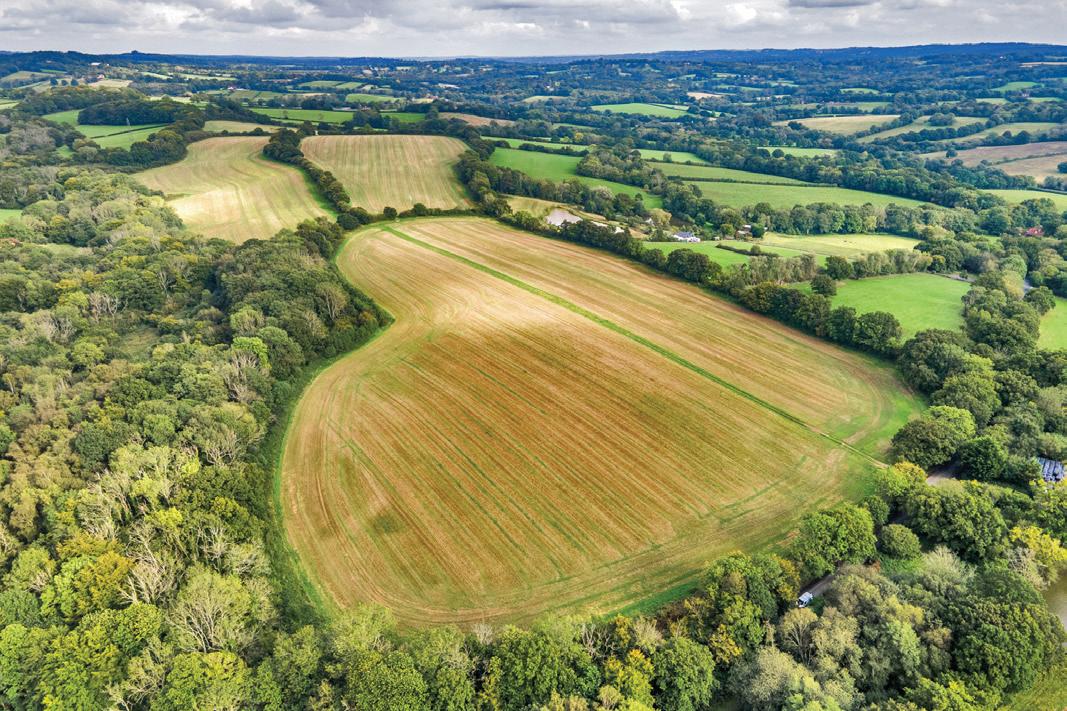


The Sustainable Farming Incentive (SFI) 2023 opened for applications just over a year ago, so now is the perfect time to take stock and plan ahead.
Many farmers are now approaching the 11th or 12th month of their initial agreement – the window during which they need to submit their first ‘annual declaration’.
While the process of doing this is fairly straightforward, it’s important to ask yourself some frank questions. Have you been compliant with your agreement? Have you completed the management plans if you said you were going to do those? Have you done the rotational aspects you specified you would? And will you be growing the same areas of such things as cover crops, overwinter stubbles and wild bird mix – and in the same or different places – next year?
Unlike in the days of Basic Payments (BPS), when everyone had the fixed calendar date of 15 May clearly etched in their minds, the SFI has a rolling application window, so the timing of the declaration depends on the start date of your agreement. It is, therefore, potentially easier to overlook the declaration window, especially given that payments would have been arriving quarterly up to this stage anyway – but you won’t receive your fourth quarterly payment until you’ve done it.
Try not to treat the process simply as a tick-box exercise. It’s important to check everything, like you would with a Countryside Stewardship (CS) agreement or for your BPS claim. View this as the ideal moment for an annual sit-down to review your cropping plans.
This can be specifically in relation to the areas covered by an SFI agreement – should you, for example, be doing more or less of the rotational options that you have in your agreement? (Depending on where you might be moving rotational actions to, you may also need to update your land use information on the Rural Payments website.)

Obviously, however, it makes sense to consider this with your wider plans, remembering that the 2024 SFI expanded offer has a much wider range of actions. Perhaps you should be entering a new agreement, in tandem with your existing 2023 one?
The 2024 offer certainly contains some appealing actions. In a 2023 agreement, extensively managed permanent pasture would have qualified for a low-input grassland payment of £151/ha. In 2024, you could potentially also receive a haymaking supplement, cattle grazing supplement and/or a rare breed grazing supplement, which could more than double that figure.
Such opportunities mean the payments available under SFI and other schemes could now collectively fill the hole left by disappearing BPS revenue. Assume your BPS payment was £220/ha in 2020; if you received that £151/ha plus the late-cut haymaking supplement (GRH8) of £187/ha, as well as the cattle grazing (GRH11) at £59/ha, you could end up at £397/ha.
With regard to SFI 2024, it’s worth bearing in mind that while the payments for no-till (SOH1) and variable rate application of nutrients (PRF1) offer attractive sums of £73/ ha and £27/ha respectively, you need to look in detail at whether or not you can deliver

them in practice. Lots of farmers are drawn to the idea of variable nutrient application because it so clearly makes environmental and commercial sense, but may not have the (often-expensive) equipment required to do it.
Looking ahead, DEFRA is claiming it’s not intending to reinvent the wheel annually when it comes to SFI – although its seeming preparedness to do so for the past three years has been frustrating. We are hoping there will be further announcements before Christmas with regard to, at the very least, further actions available under the expanded 2024 offer, but we also need far more clarity on CS and for the many issues with the application processes to be fixed.
The current uncertainty makes it difficult to plan and farmers feel stuck, especially where they have multiple agreements. One client, for example, has an entry/higher level stewardship agreement due to run until 2028, an SFI agreement started in March 2024 and a CS mid-tier agreement which ends at the end of this year.
Deciding if, how and when to replace these agreements requires careful planning. This planning would be greatly aided by more clarity about what will be available and how to shift between schemes, along with a fit-forpurpose, easy-to-use process for applications and any subsequent switches.
In the meantime, the priority should be to review your plans on the basis of the information you do have and to lock-in payments which make sense in the context of your wider business objectives.




A substantial farmyard within excess of 83,000 sq ft, which is 7,710 sq m of modern and traditional farm buildings within a ring fenced yard extending to some 5.42 acres (2.19 hectares). Further attractive 3 bedroom detached period farmhouse and 73 acres of Grade I and Grade II farmland, available to the buyer by separate negotiation.
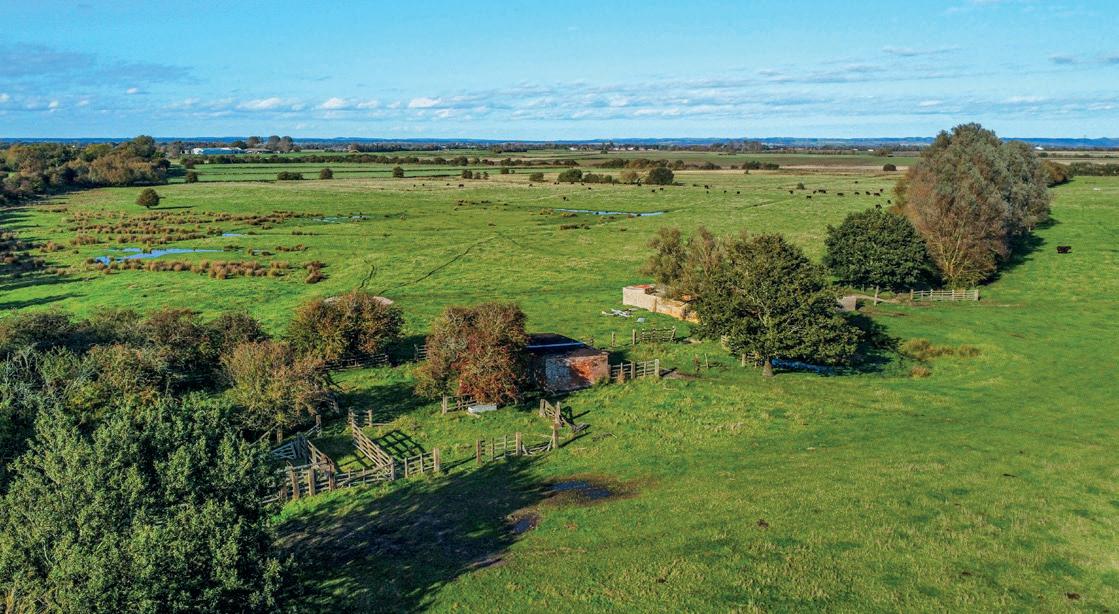





A





• Steel frame buildings
• Sheeting and cladding
• Guttering and repairs
• Groundworks and drainage
• Demolition and asbestos removal
• Refurbishment and change of use
• Concrete frame and steel frame repairs
• Insurance and general repairs
• Concrete floor and block paving
www.gjelgarconstruction.co.uk
For more information contact us:
t: 01233 623739 m: 07860 414227
e: office@gjelgarconstruction.co.uk







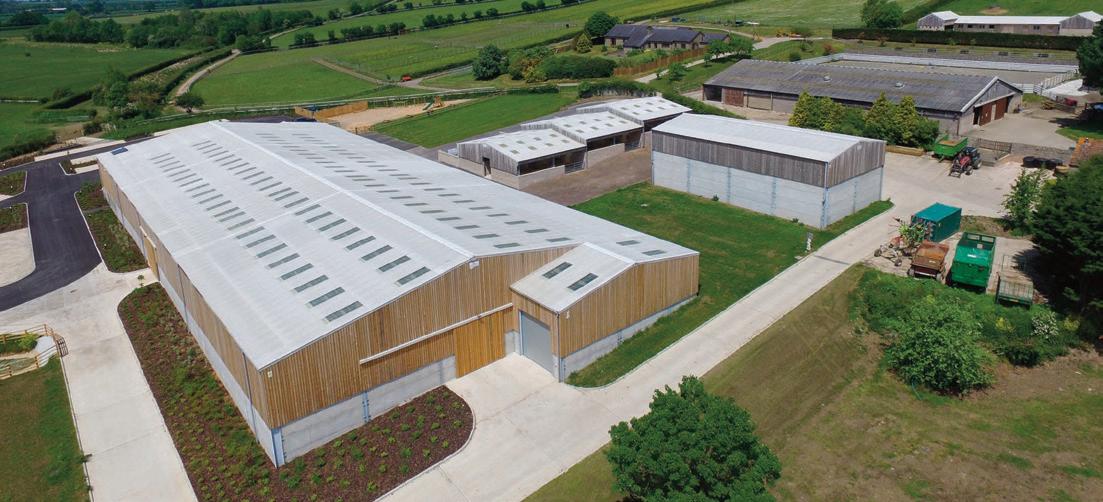
Steel-frame buildings for your farm
+ Supply only or supply & erect
+ Construction all over the UK
+ Award winning company
Strength, Security, Style

Shufflebottom Ltd
Cross Hands Business Park, Cross Hands, Llanelli, Carmarthenshire SA14 6RE















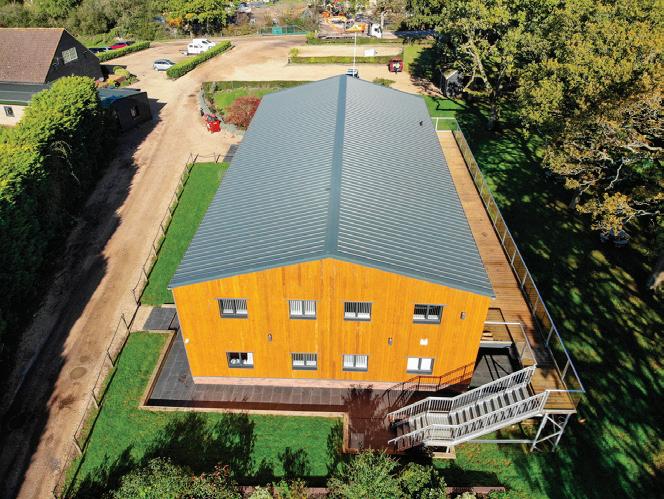
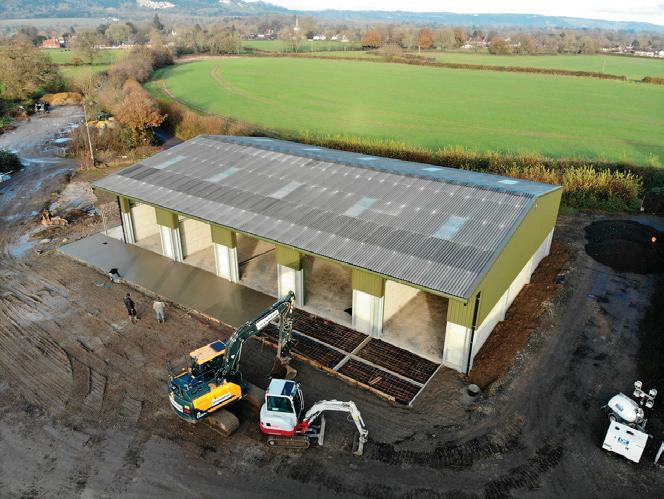










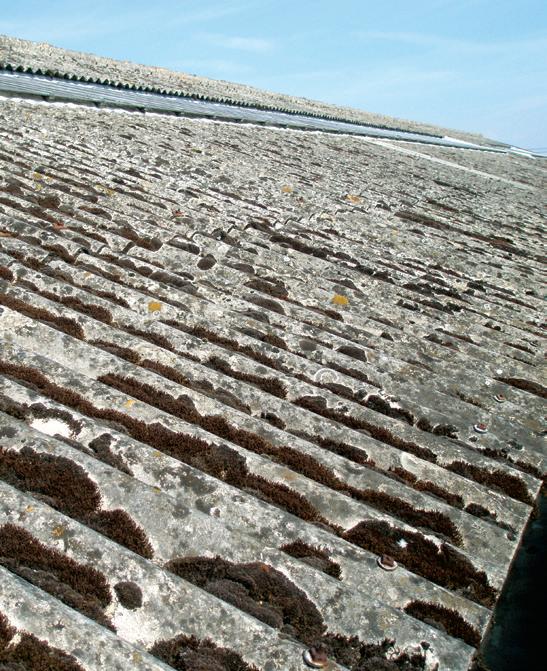

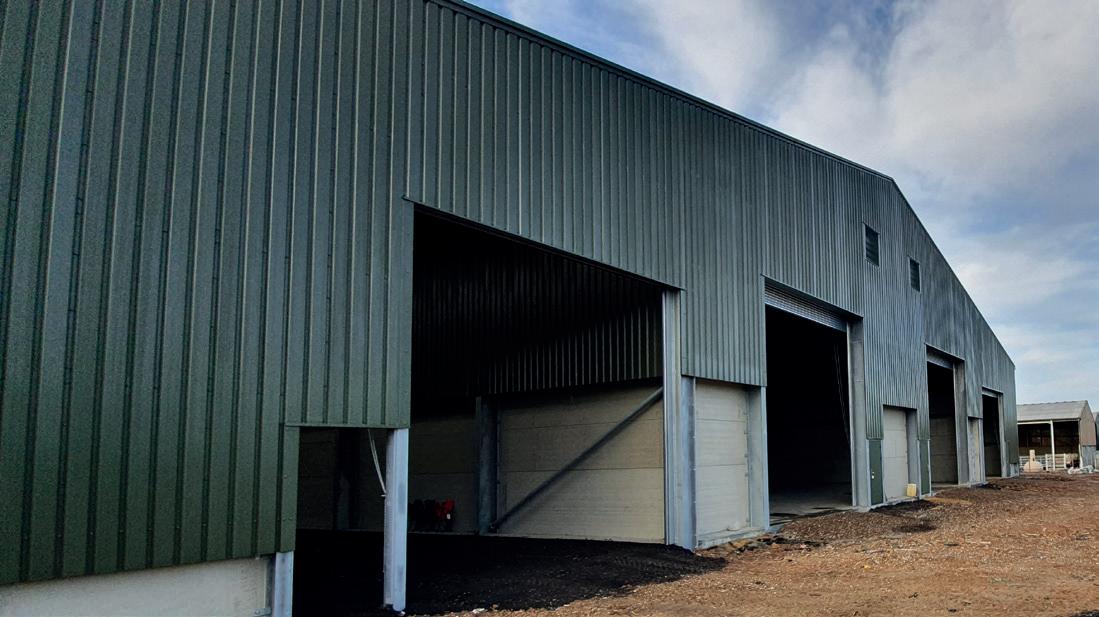



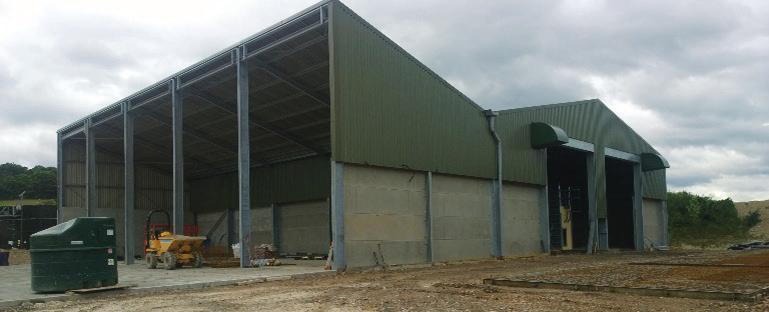


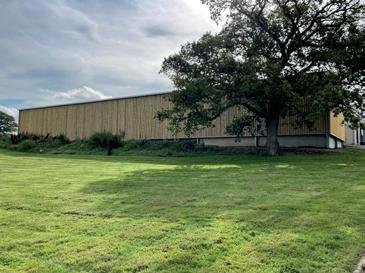









Roofing & Cladding - Strip & Re-sheet - Repairs
Metal Profile - Fibre Cement - Insulated - Timber Boarding
Asbestos Sheet replacements - New Roof lights
New Roofs Projects & Insulated Over-SheetingValley Gutter repairs & Re-lining
Asbestos Stripping & Environmental Waste Disposal
Refurbishments & Extensions to existing buildings
Change of Use & Rental Unit Conversions
Insurance Claim Works for Fire, Flood & Storm Damage
Same Day - Next Day, Site Visit, Inspection Service
Making Building/Premises Safe - Secure
Emergency Clear-Up Operations
Asbestos Stripping & Environmental Waste Disposal
Demolition & Site Clearance Works
Ground Works, Roads, Drives & Drainage Works
Re-Instatement Works
ALL WORKS GUARANTEED

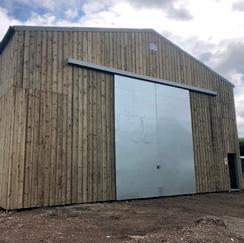
























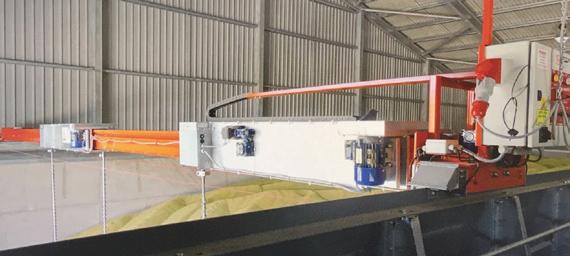




Fencing stakes
Straining posts
Chestnut
Chestnut fencing






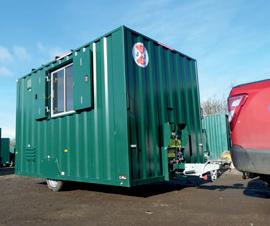






















1 Unable to move (9)
5 Dull, constant pain (4)
8 Leaving to start a journey (7)
9 Freshwater fish (4)
10 Produce an egg (3)
11 Farm equipment (7)
14 Scapula (8,5)
16 A list of things to be discussed at a meeting (6)
18 Plant whose rhizome is used a spice (6)
21 Used to give commands to sheep dogs (7)
24 Molton rock from a volcano (4)
25 Used to protect tyres from dirt (9)
26 Sedimentary rock found in South East England (5,4)
27 Compass point (4)
1 A very small body of water (6)
2 A verbal response (5)
3 Ground dwelling songbird (4)
4 Cricket term (7)
6 Somewhere to sit (5)
7 Discover (7)
12 Anti social youth (3)
13 Provide money for a specific purpose or project (4)
14 Formal identification on a letter (9)
15 Breathing organ (4)
17 Not existing before (3)
18 Extreme weather events (5)
19 A distinct historic period (3)
20 Dance form (6)
22 A dog breed used for hunting (5)
23 ----- nerve, a nerve in the calf (5)
24 Big, great, huge (5)
PRIZE ANAGRAM: Rare red fleshed apple (9)
Correct entries will be entered into a draw which will take place on 18 November The winner will be announced in the December edition.


As we edge closer to winter, we are offering readers the chance to win one bottle of Pinot Reserve and one bottle of Ortega. For more information about the vineyards, please visit www.biddendenvineyards.com or call 01580 291726.
*Subject
LAST MONTH’S ANSWERS:

L a n d & P r o p e r t y E x p e r t s t
A L K H A M | K E N T

A n i m p r e s s i v e 1 9 2 0 ' s 6 - b e d r o o m h o u s e f i n i s h e d t o a h i g h s p e c i f i c a t i o n , w i t h s e l f c o n t a i n e d a n n e x e i n a n e l e v a t e d r u r a l p o s i t i o n w i t h f a r r e a c h i n g v i e w s

A d d i t i o n a l c o t t a g e s w i t h h o l i d a y l e t c o n s e n t s a s w e l l a s i n d o o r s w i m m i n g p o o l c o m p l e x , h o m e o f f i c e a n d l a n d s c a p e d g a r d e n s a n d g r o u n d s
P r i v a t e v i n e y a r d a n d a n c i e n t b l u e b e l l w o o d l a n d a d d s t o t h e s e c u r i t y a n d p r i v a c y .
I n a l l a p p r o x i m a t e l y 2 7 4 4 a c r e s

L A M B E R H U R S T | K E N T
T w o n e i g h b o u r i n g f a r m s e x t e n d i n g i n t o t a l t o o v e r
4 7 5 a c r e s
A v a i l a b l e a s a w h o l e o r i n v a r i o u s l o t s
G o o d s i z e d b u i l d i n g s a n d y a r d s a l o n g w i t h
s p o r t i n g p o t e n t i a l
V e r s a t i l e a n d u n d u l a t i n g f i e l d p a r c e l s w i t h B N G
p o t e n t i a l .
1 2 3 3 7 4 0 0 7 7
G u i d e P r i c e O n A p p l i c a t i o n
G u i d e P r i c e : £ 3 , 3 0 0 , 0 0 0

E V E N O A K S | K E N T
A d i v e r s i f i e d s m a l l h o l d i n g w i t h a s i g n i f i c a n t r a n g e
o f a g r i c u l t u r a l a n d i n d u s t r i a l b u i l d i n g s
L a r g e h a r d y a r d a r e a e x t e n d i n g t o n e a r l y 3 a c r e s
D e t a c h e d f a r m h o u s e w i t h 4 b e d r o o m s a n d a n c i l l a r y
b u i l d i n g s .
A g r i c u l t u r a l l a n d e x t e n d i n g t o 8 2 . 1 7 a c r e s .
I n a l l a p p r o x i m a t e l y 8 5 . 1 1 a c r e s G u i d e P r i c e : £ 2 , 0 0 0 , 0 0 0
w w w b t f p a r t n e r s h i p c o u k c h a l l o c k @ b t f p a r t n e r s h i p c o u k